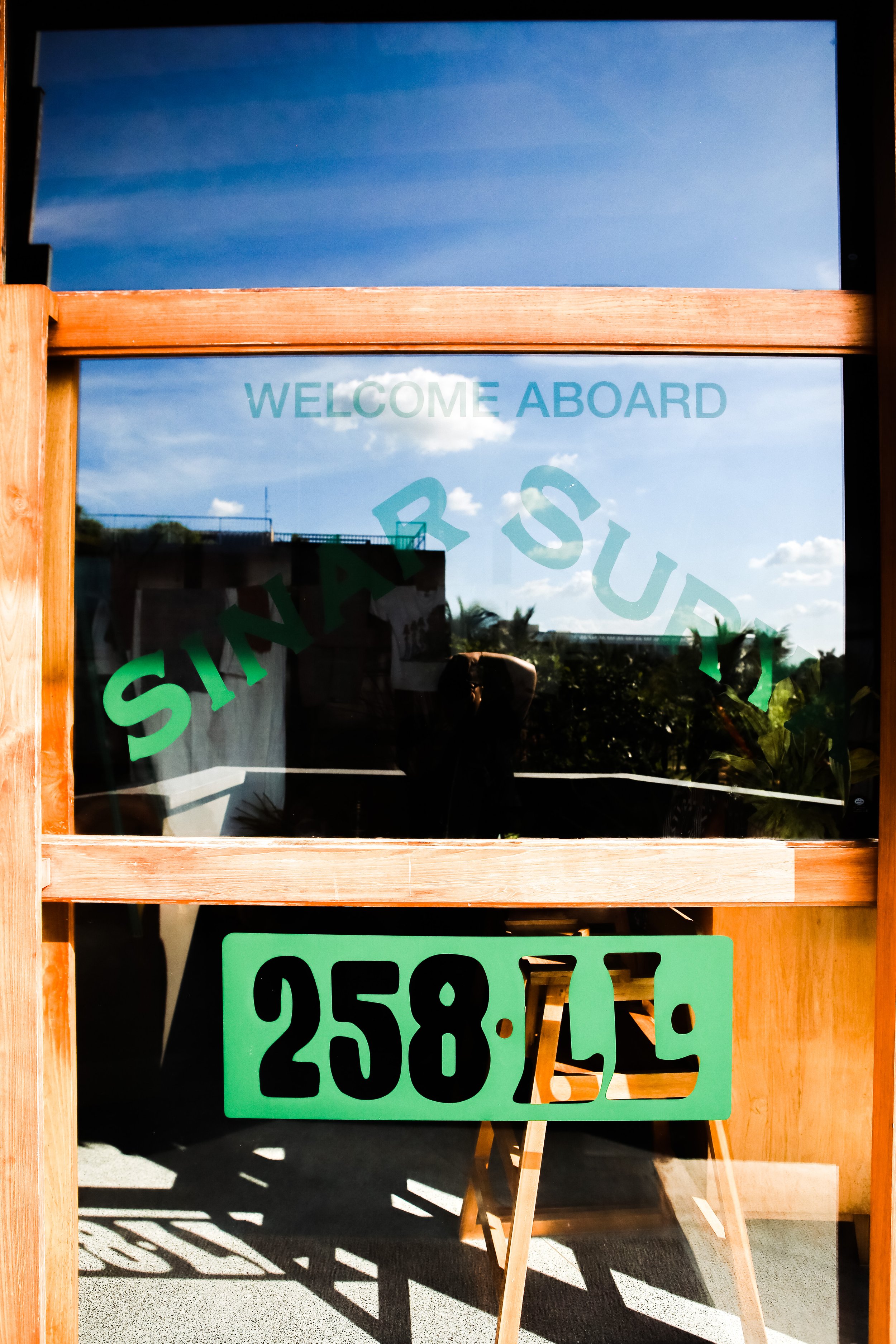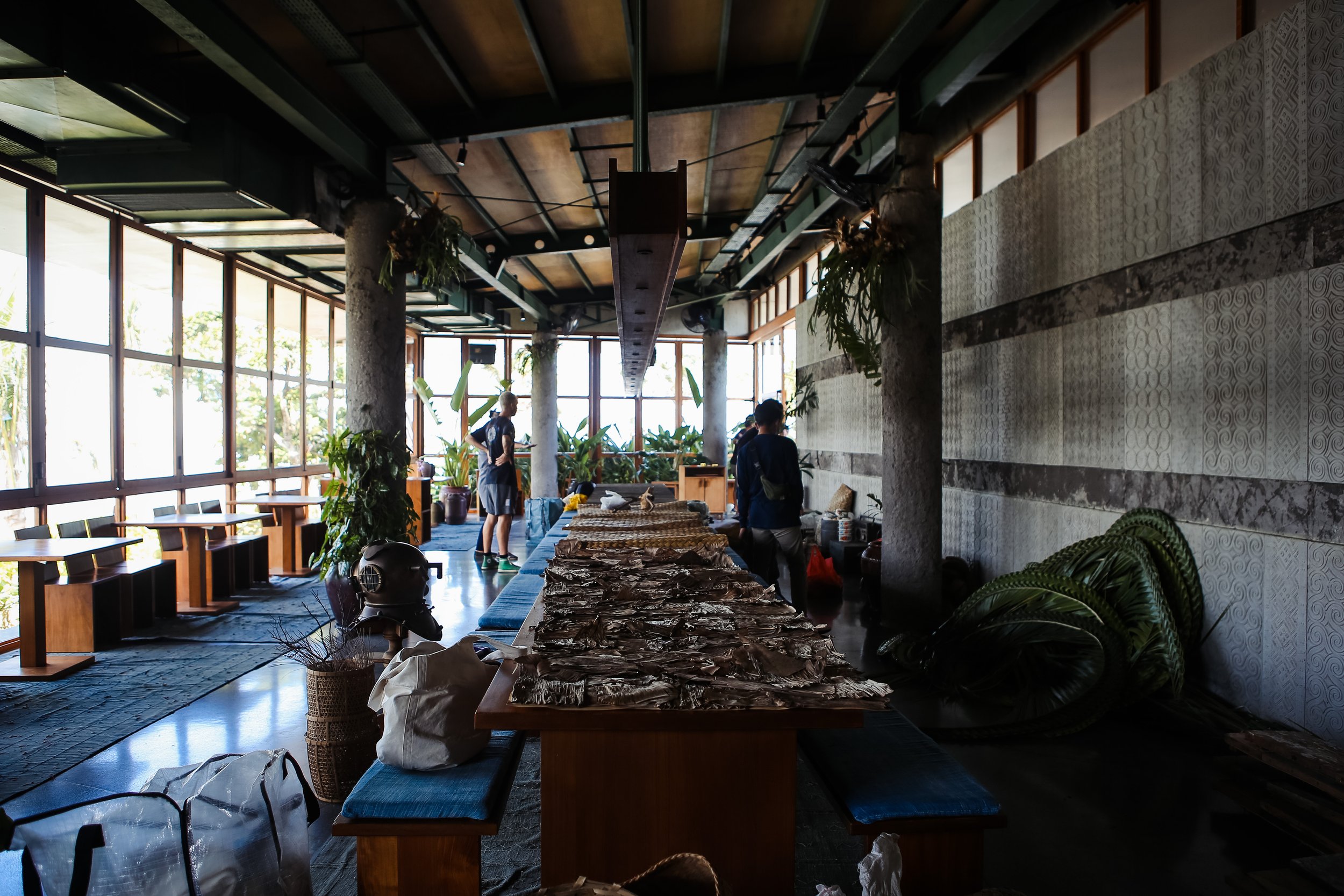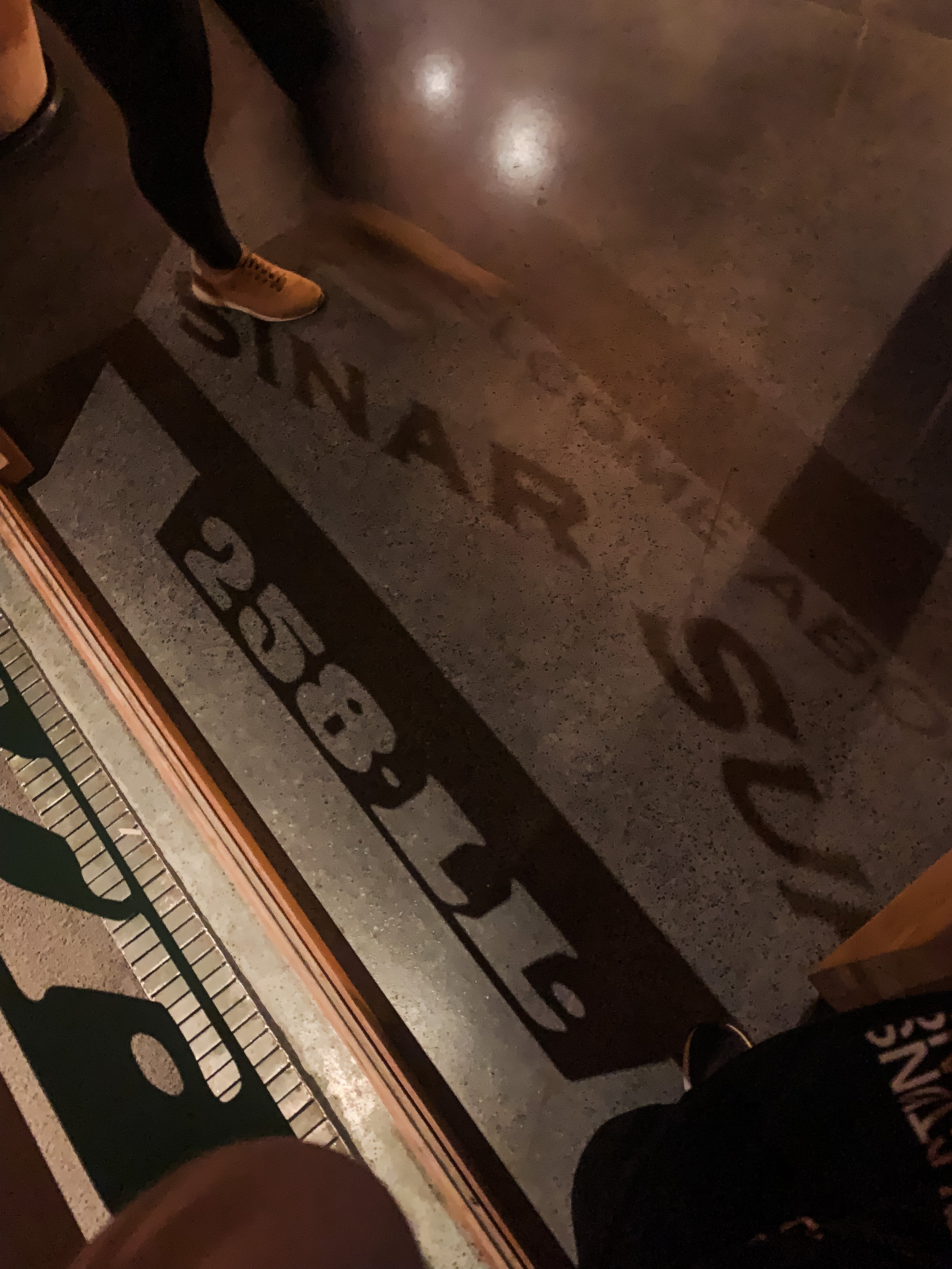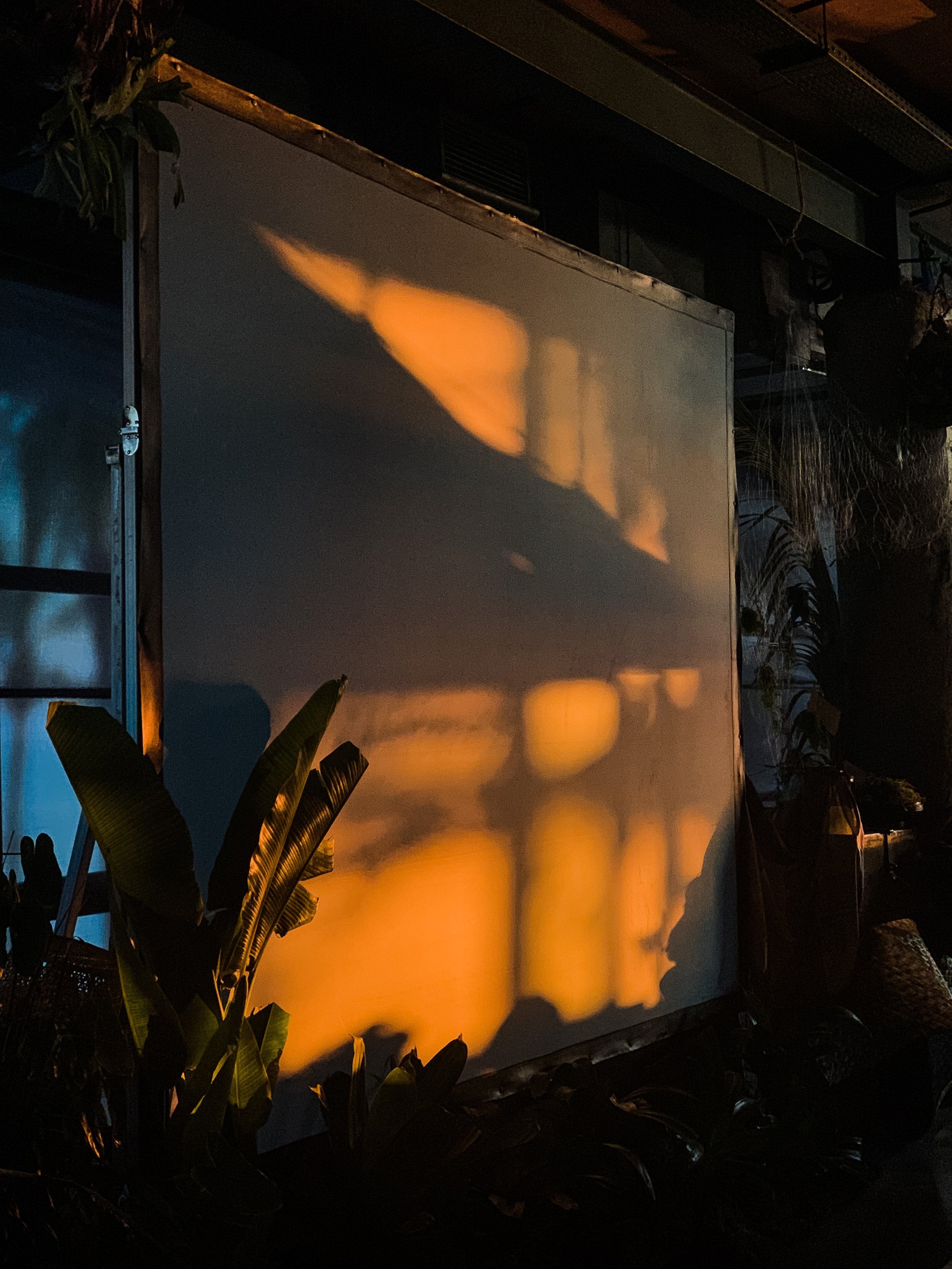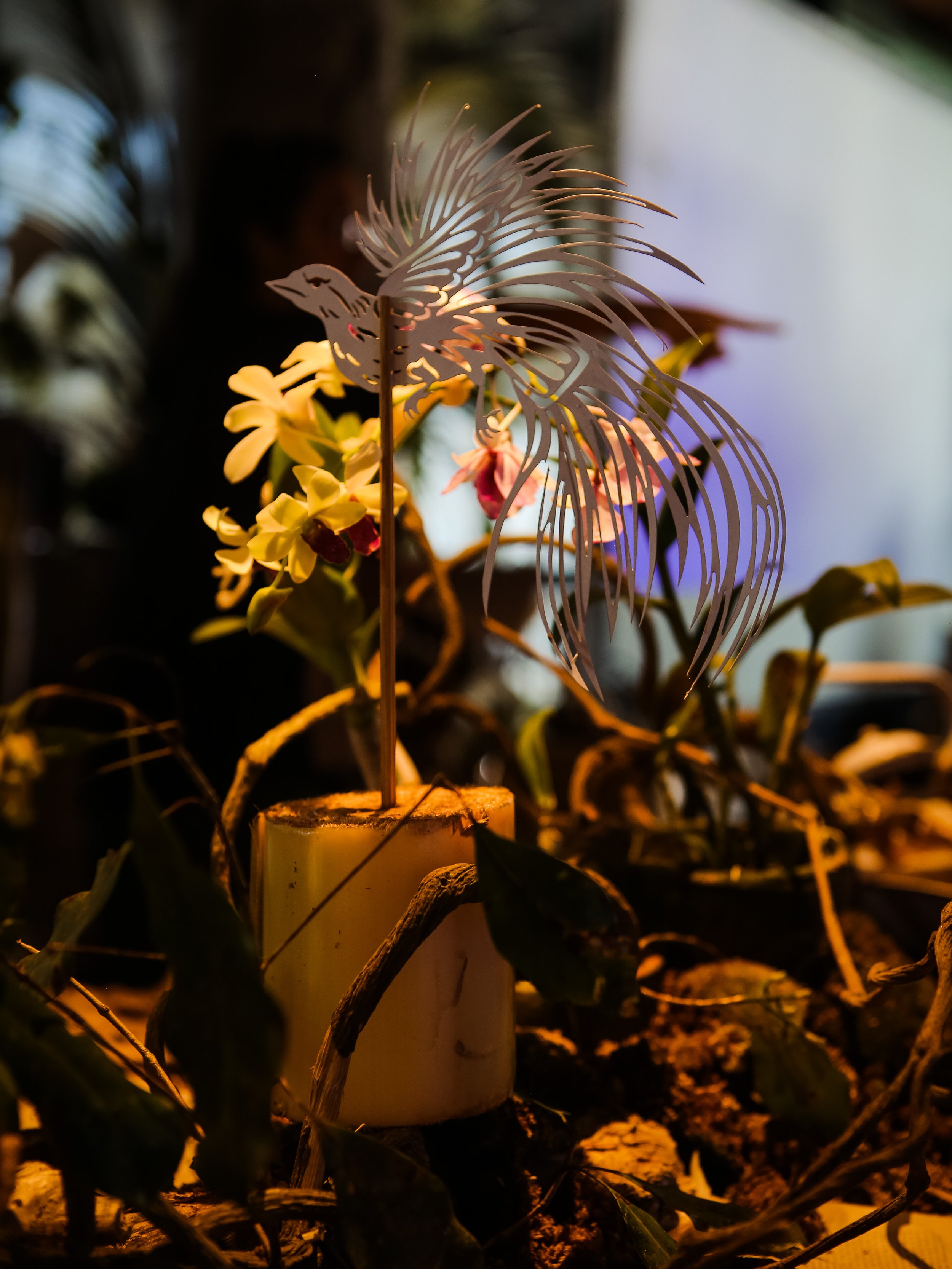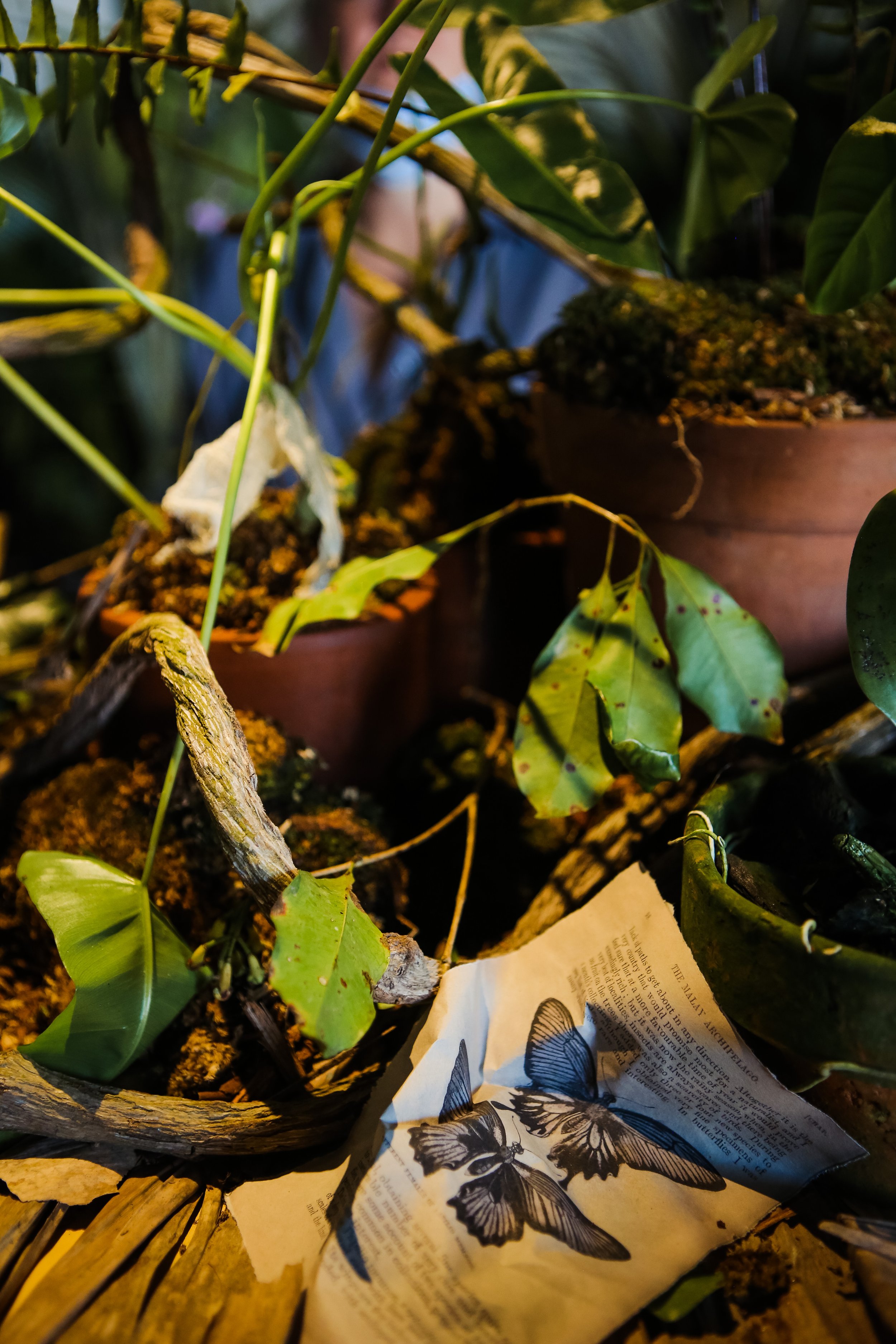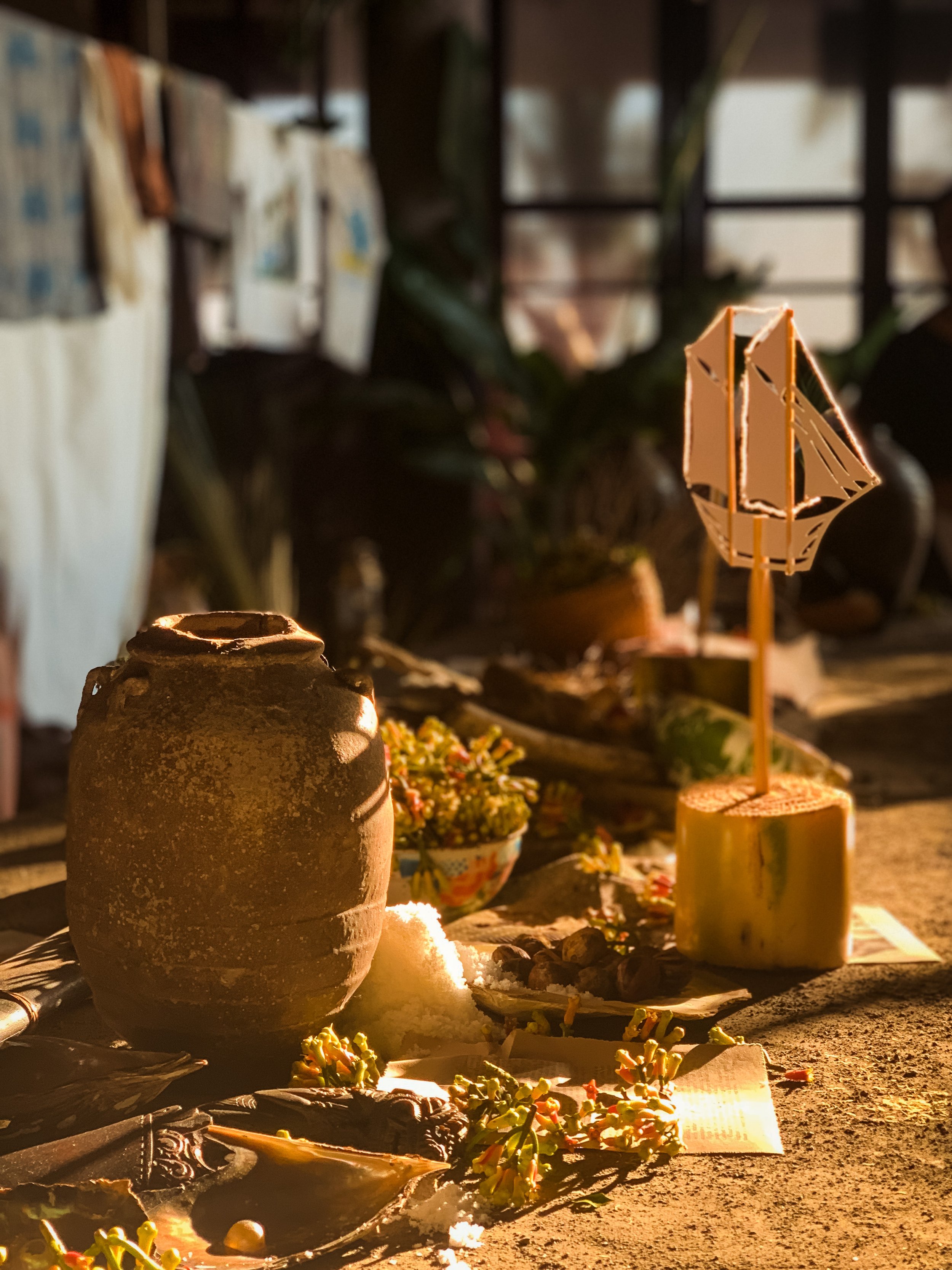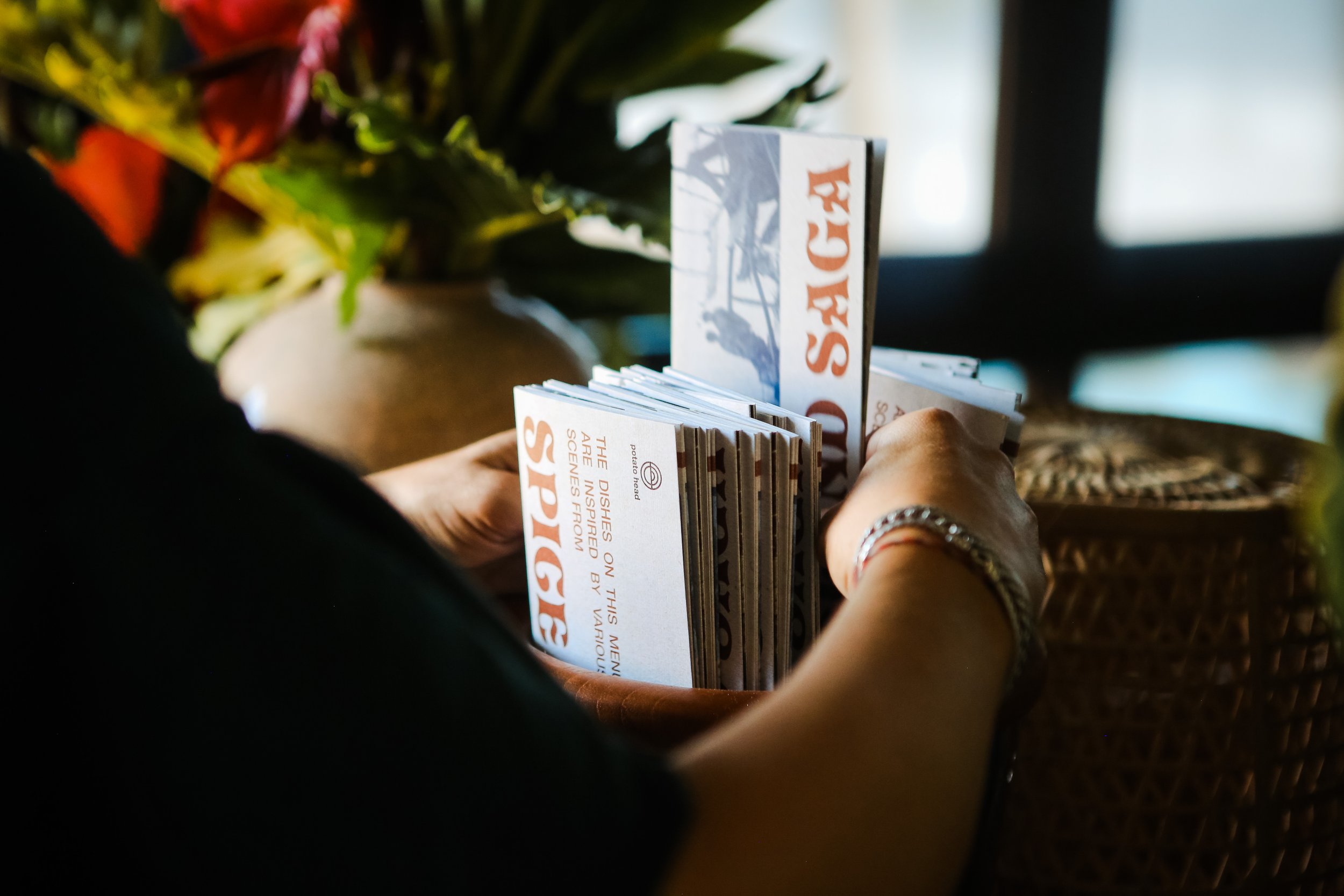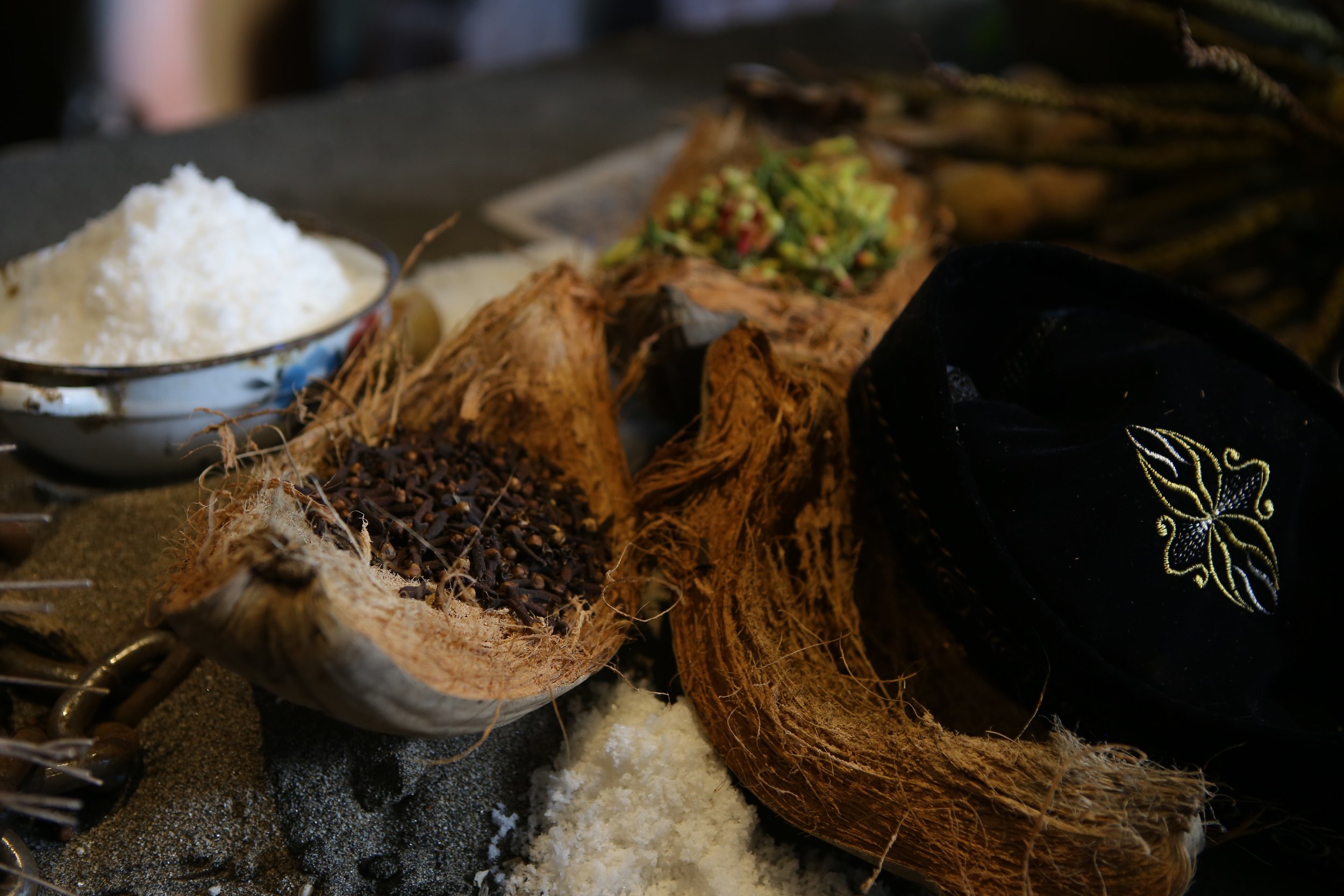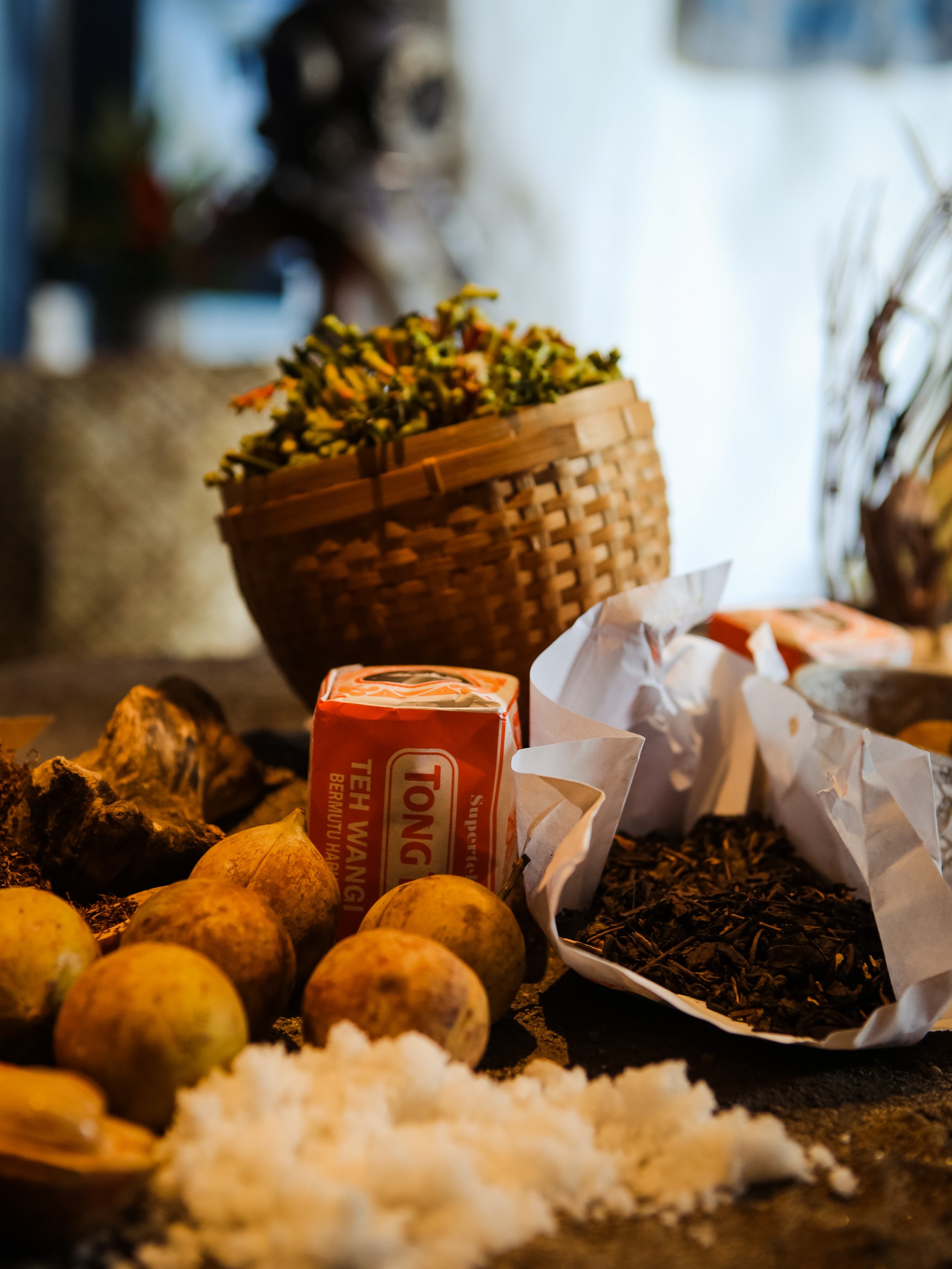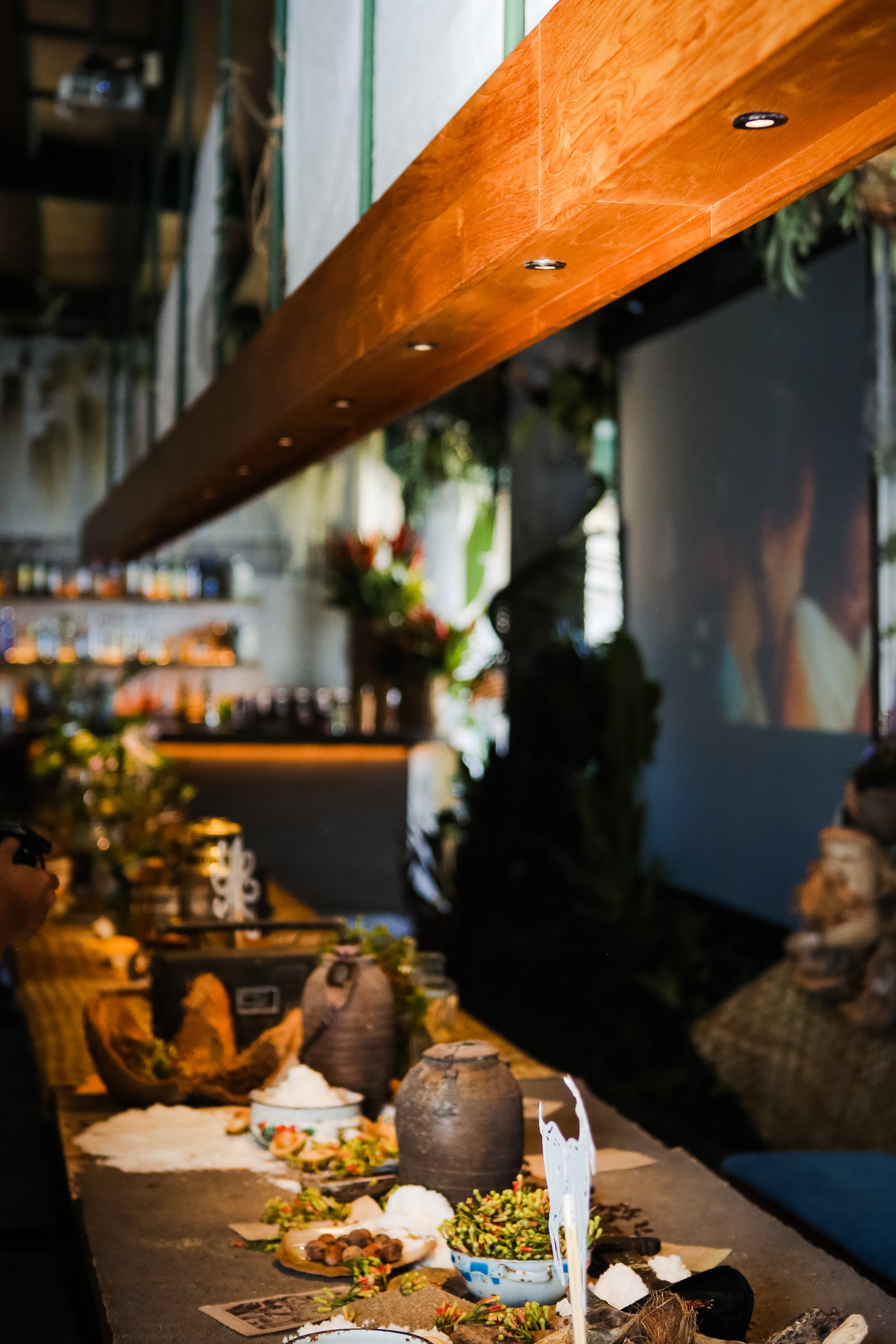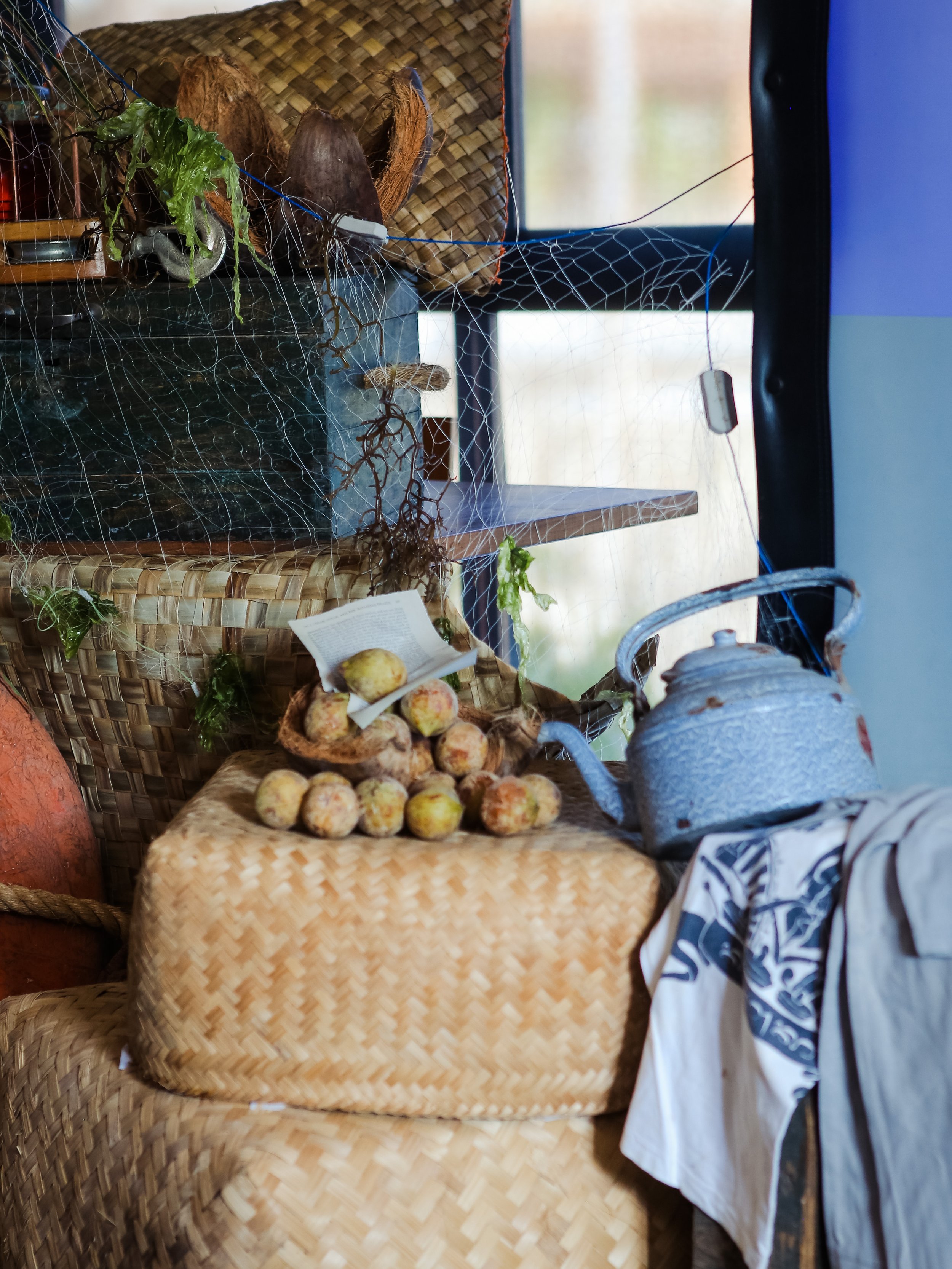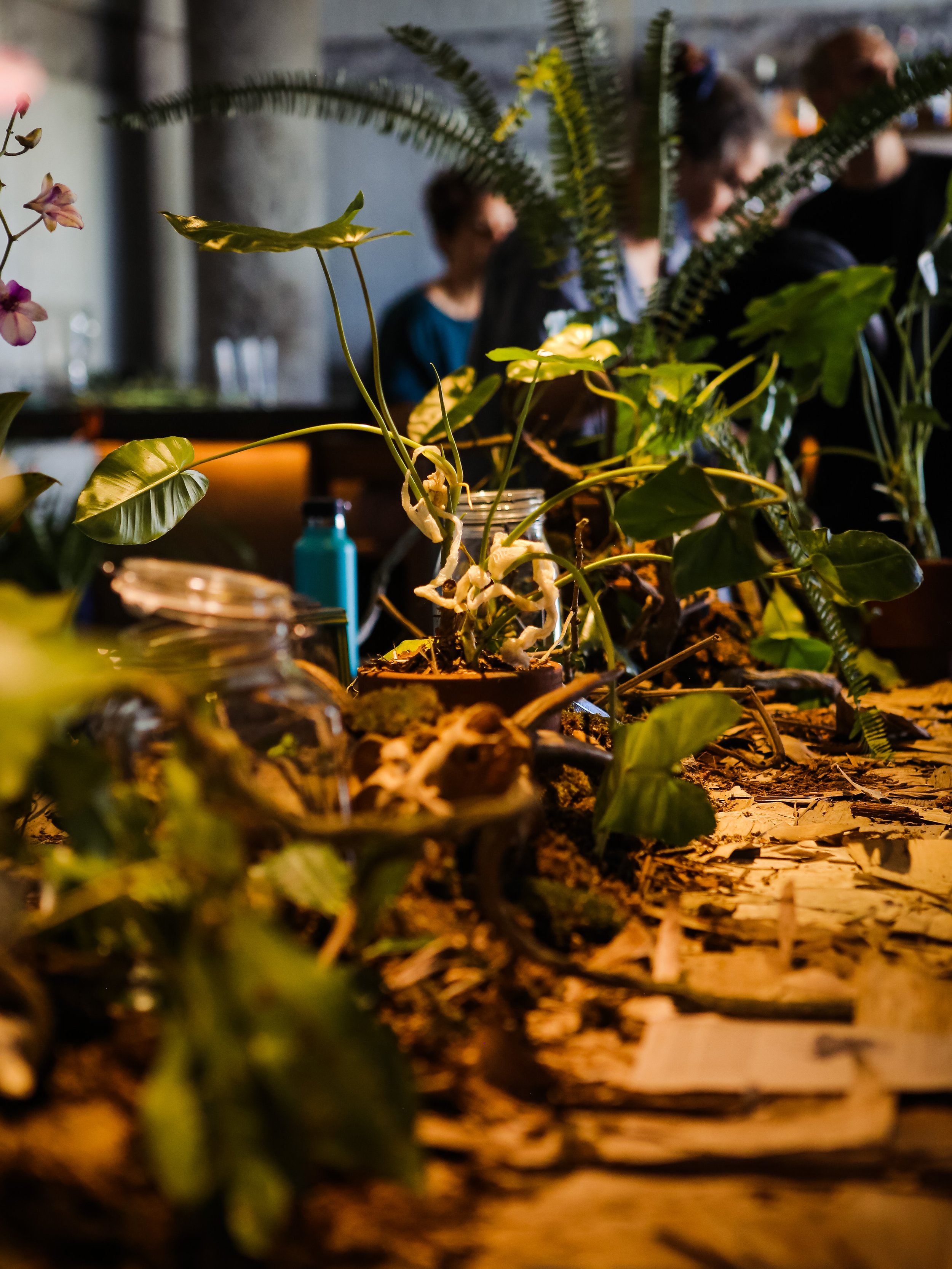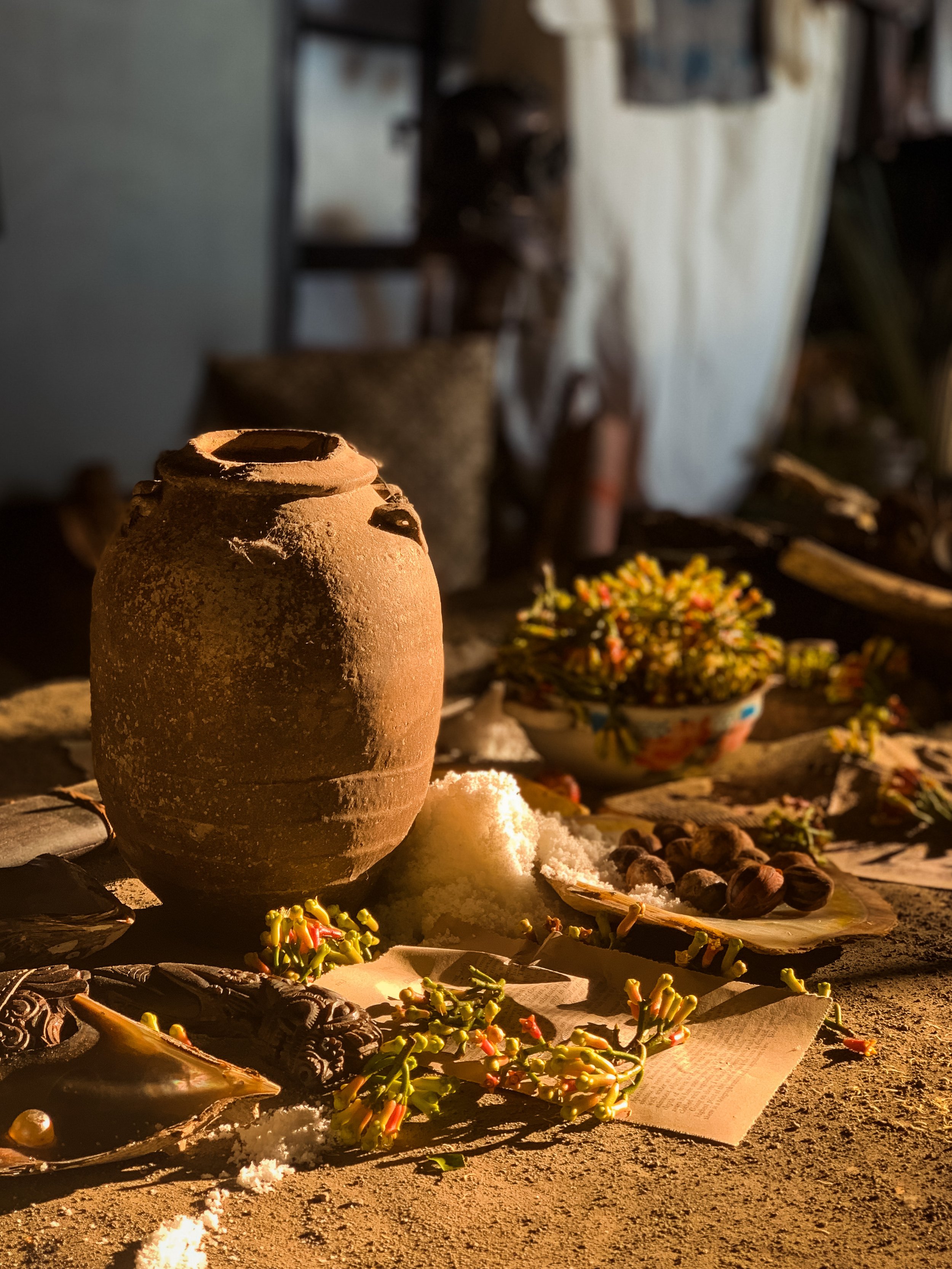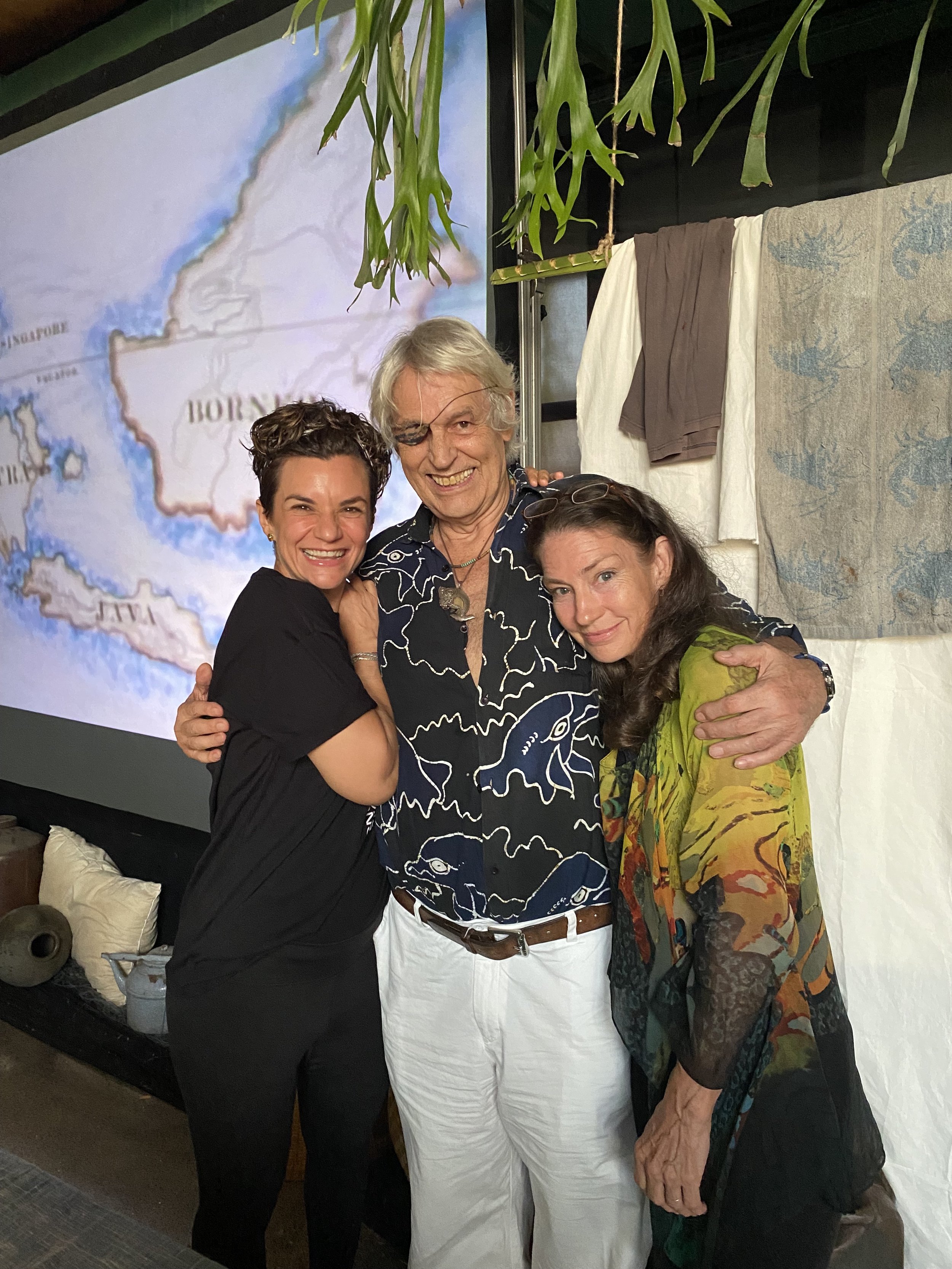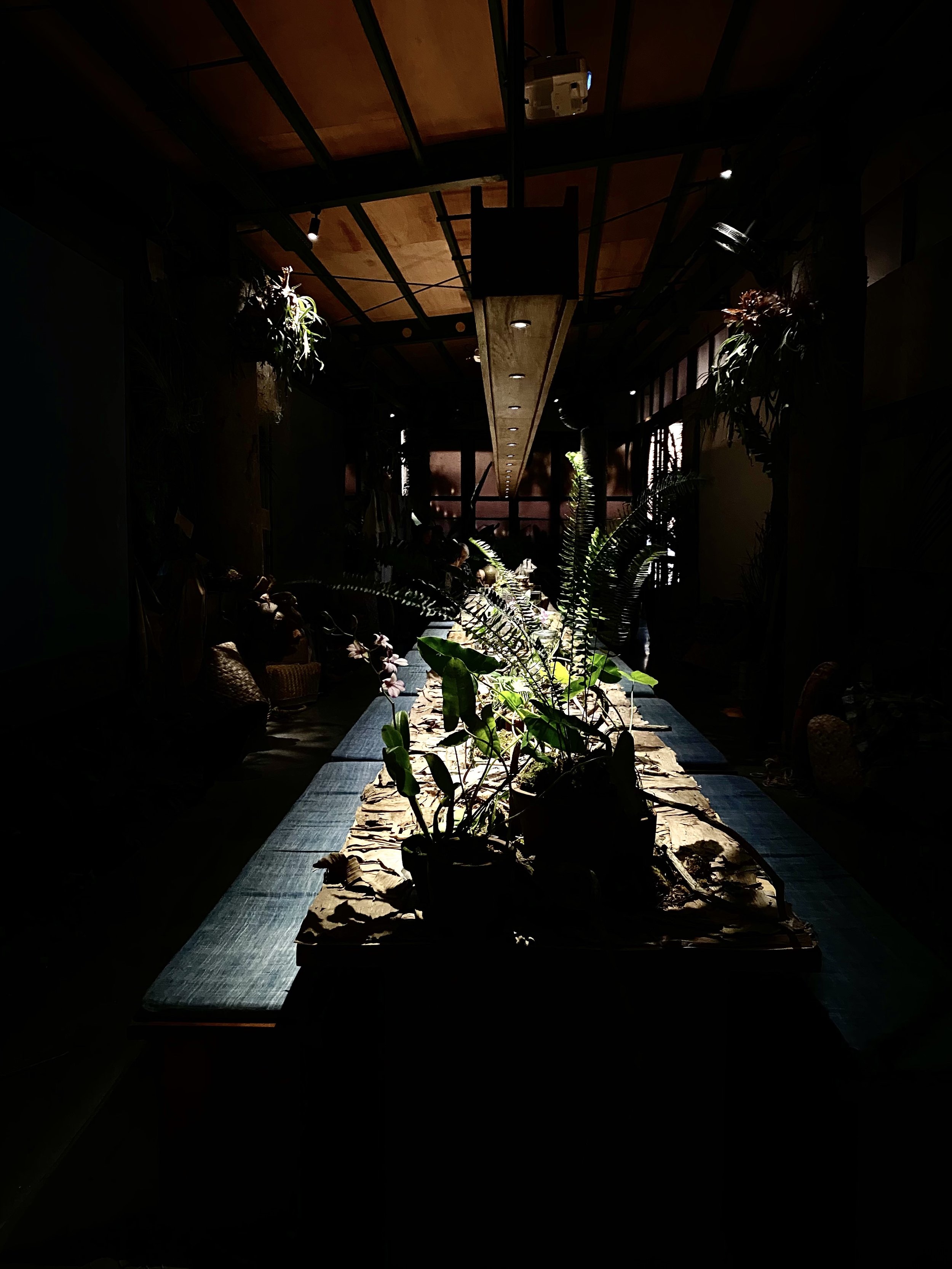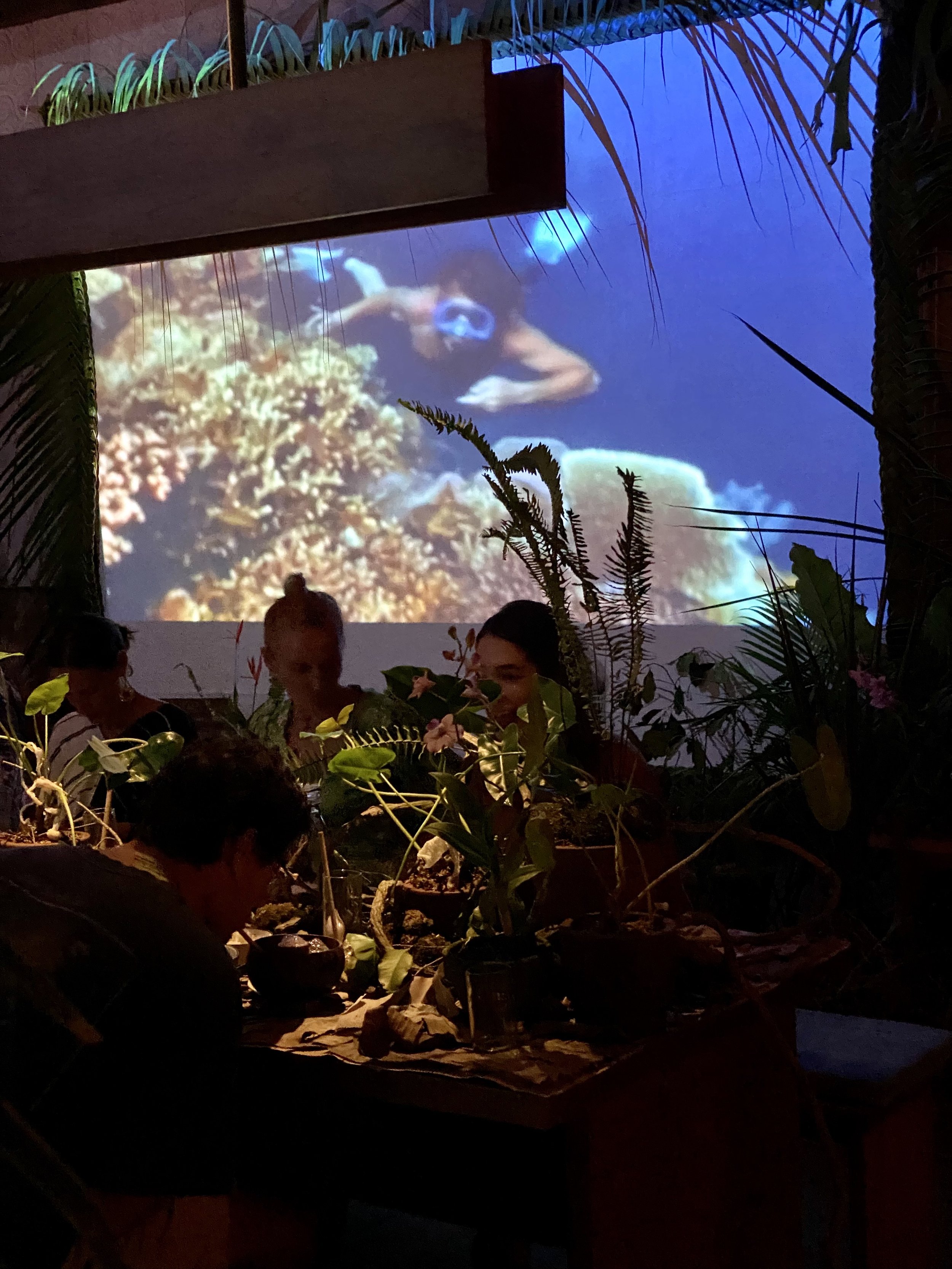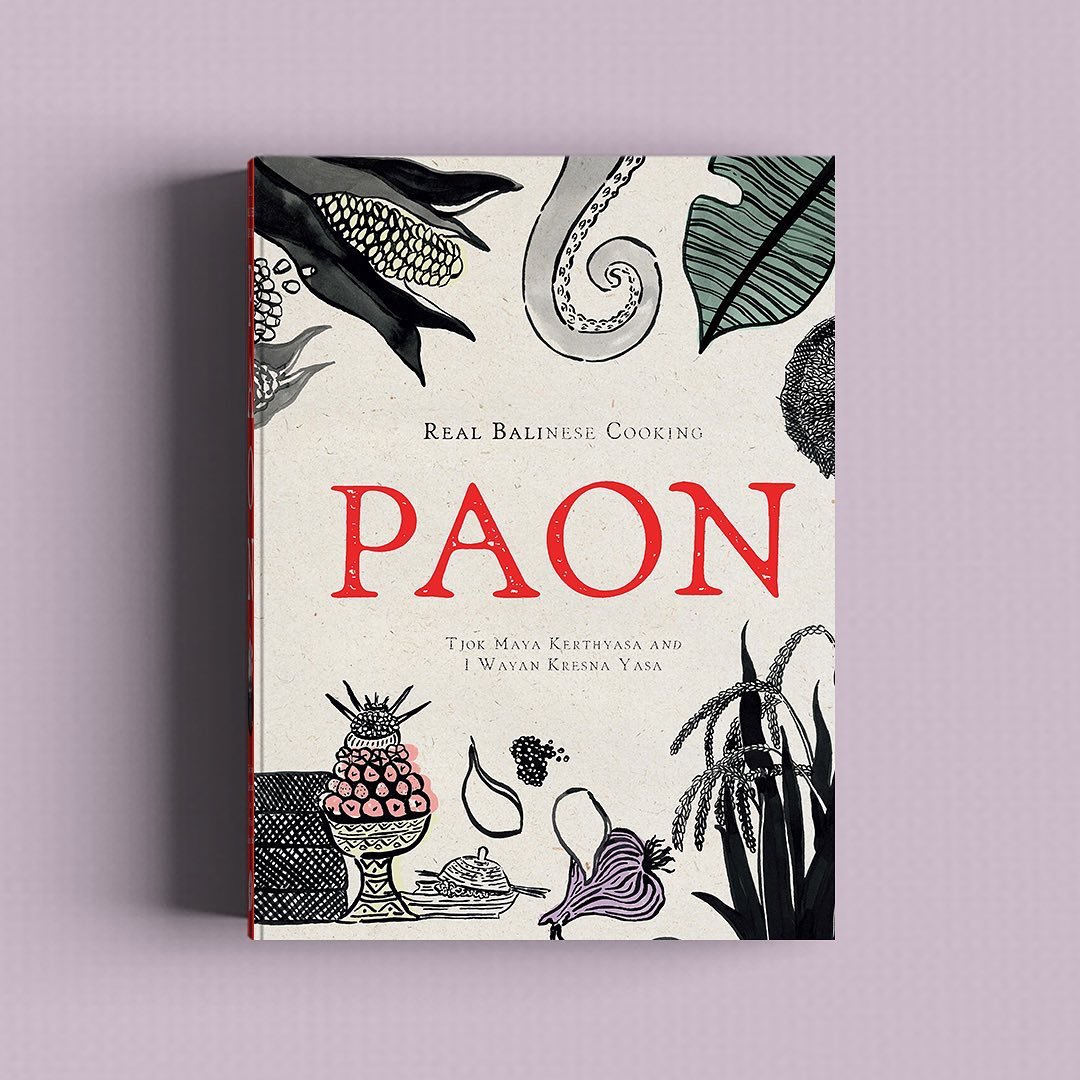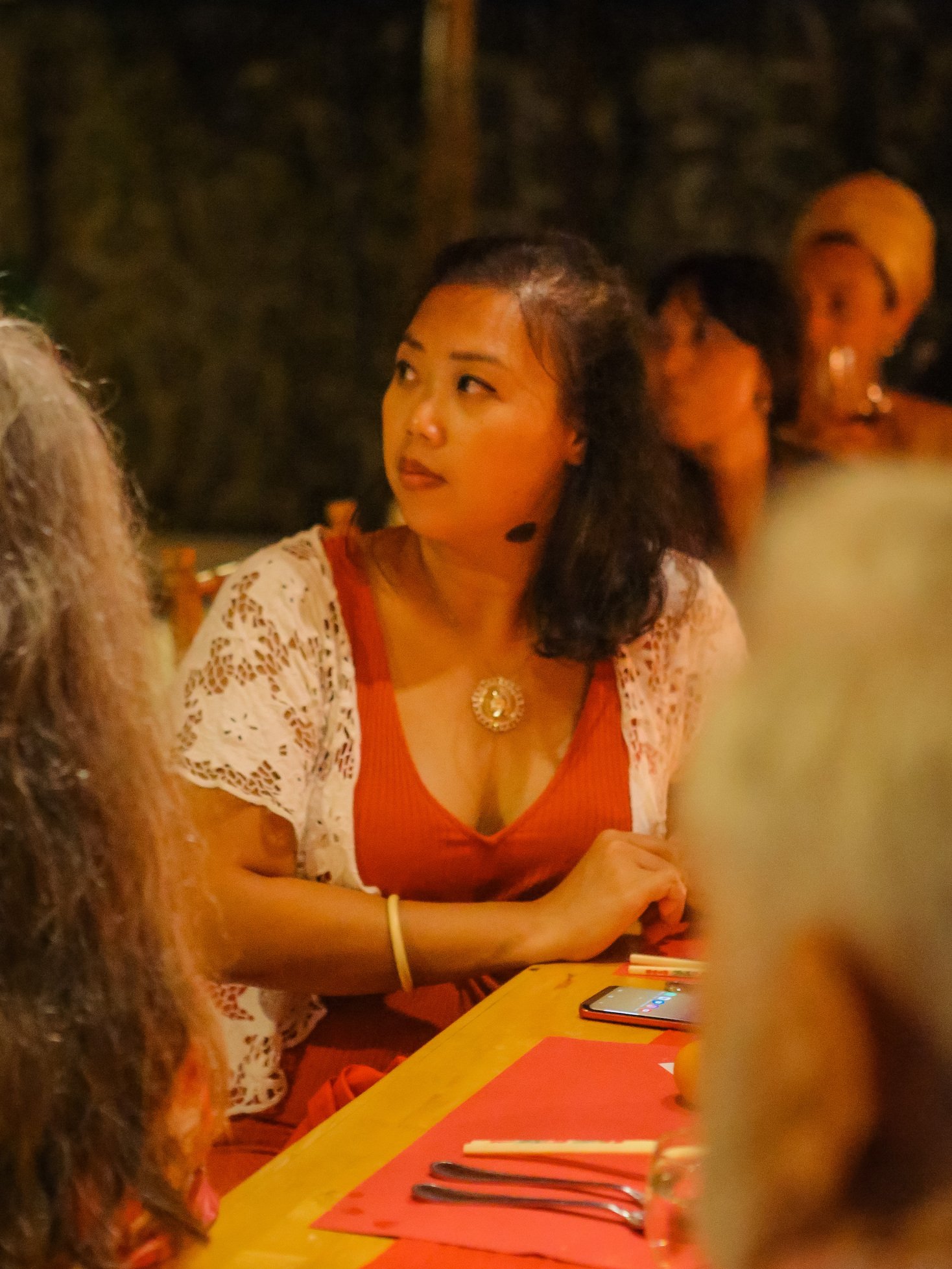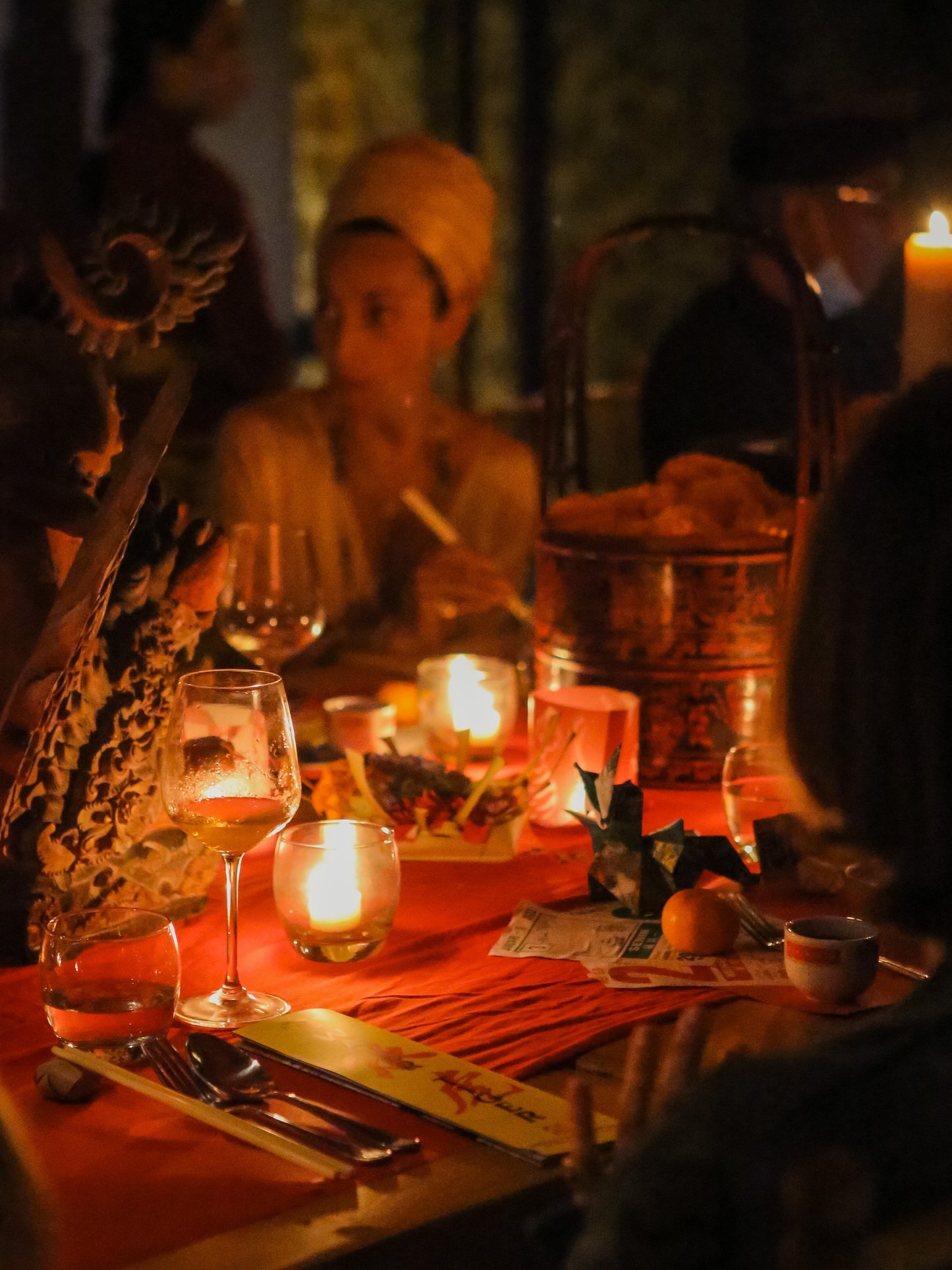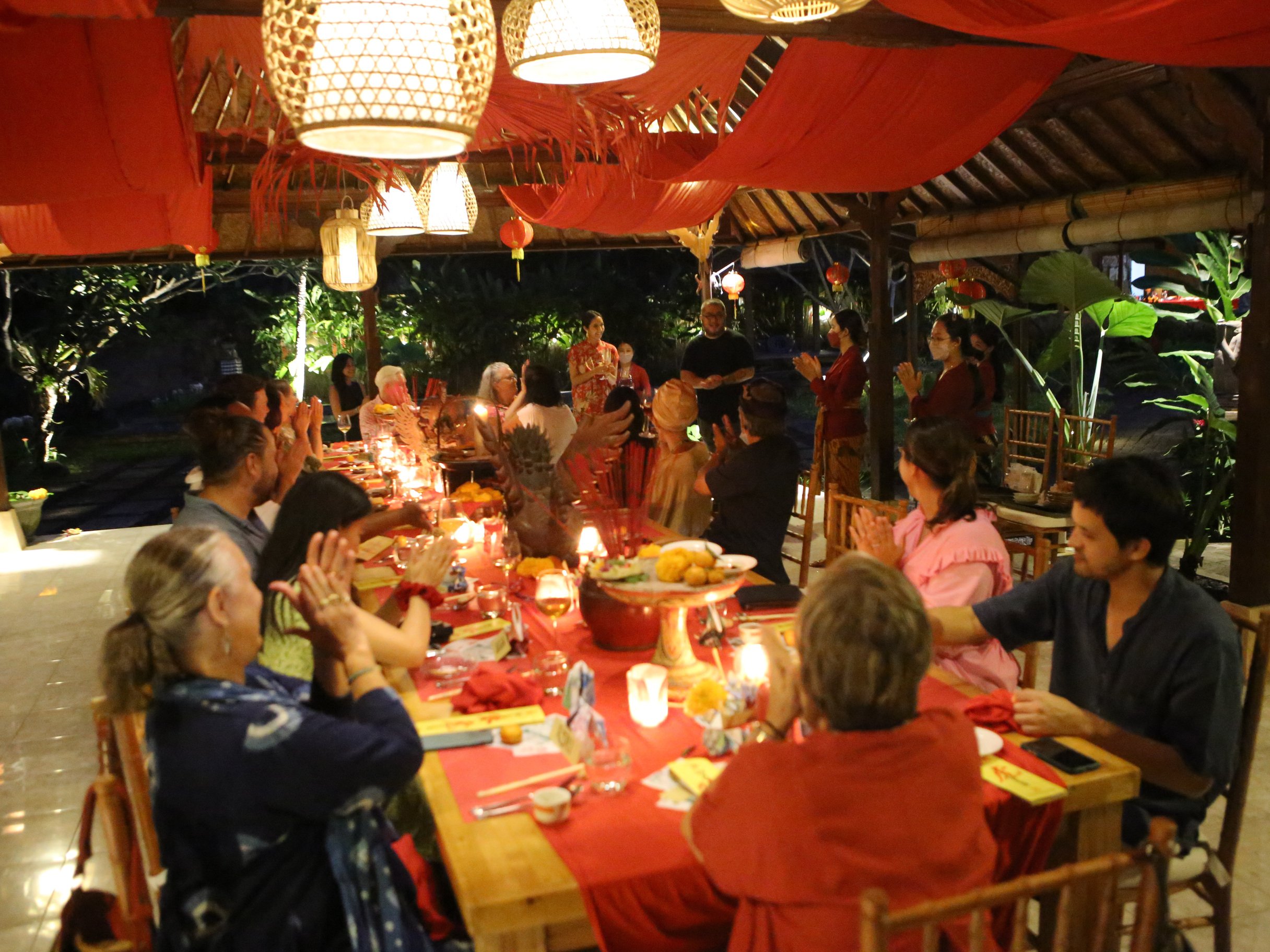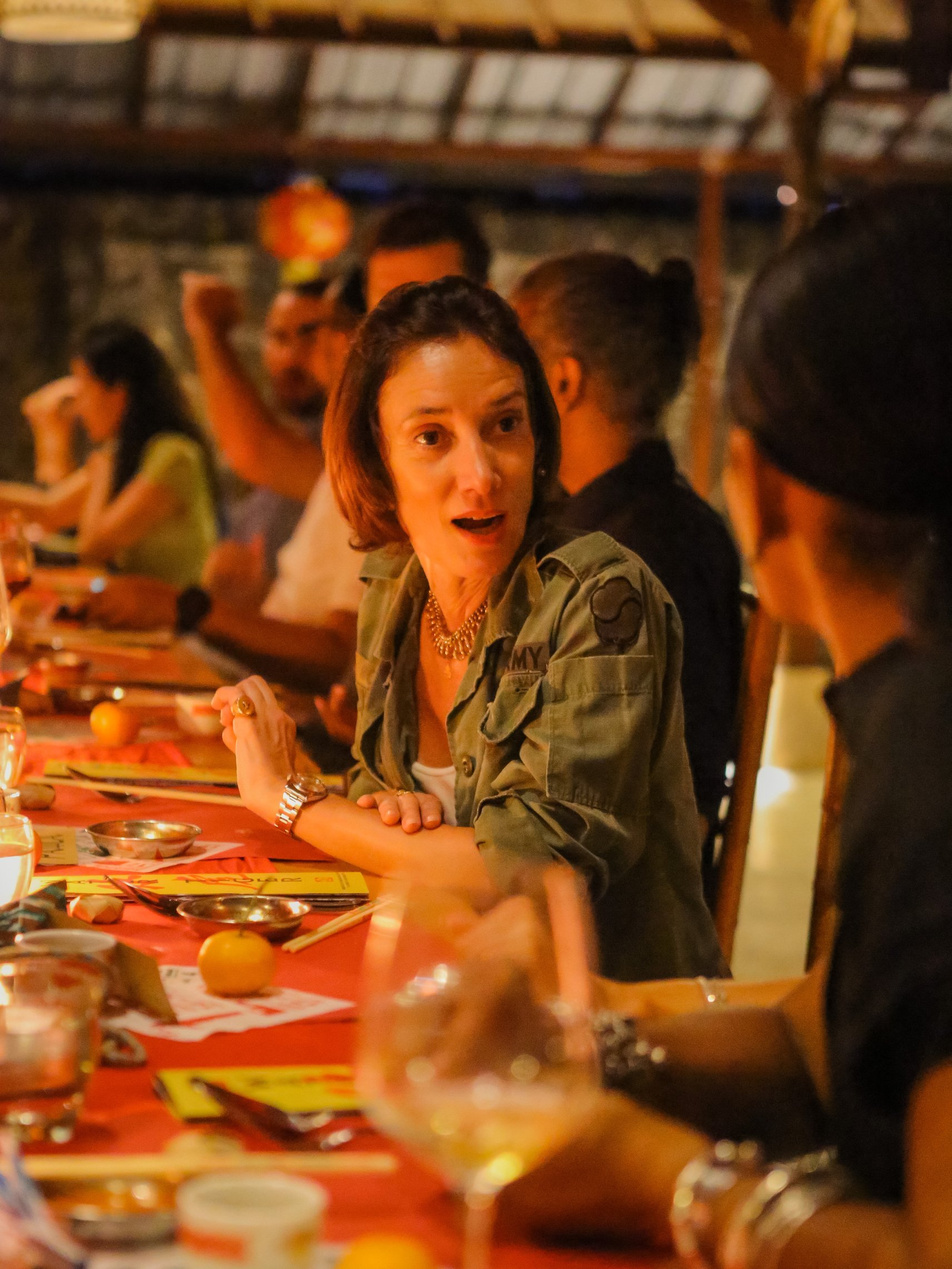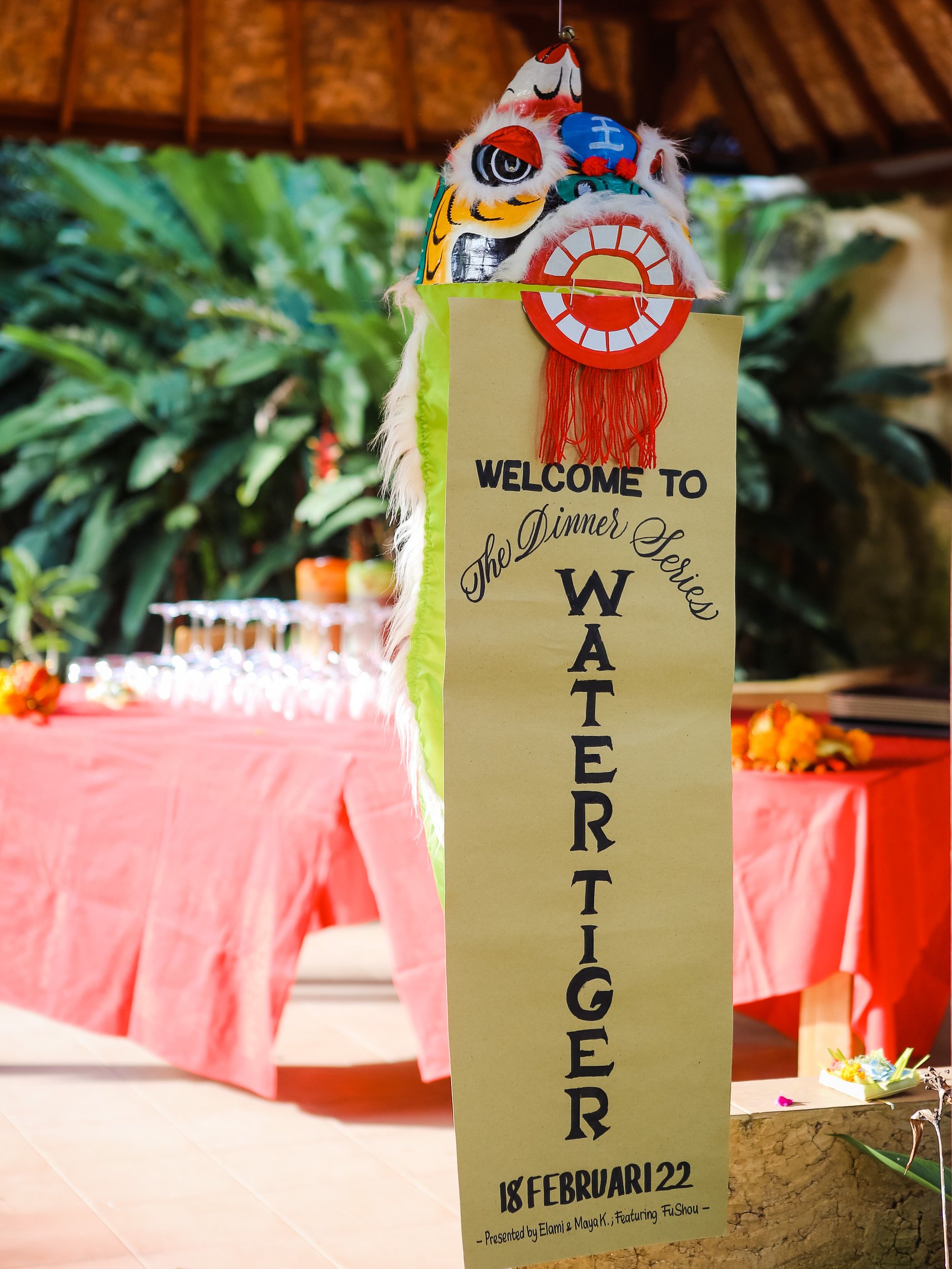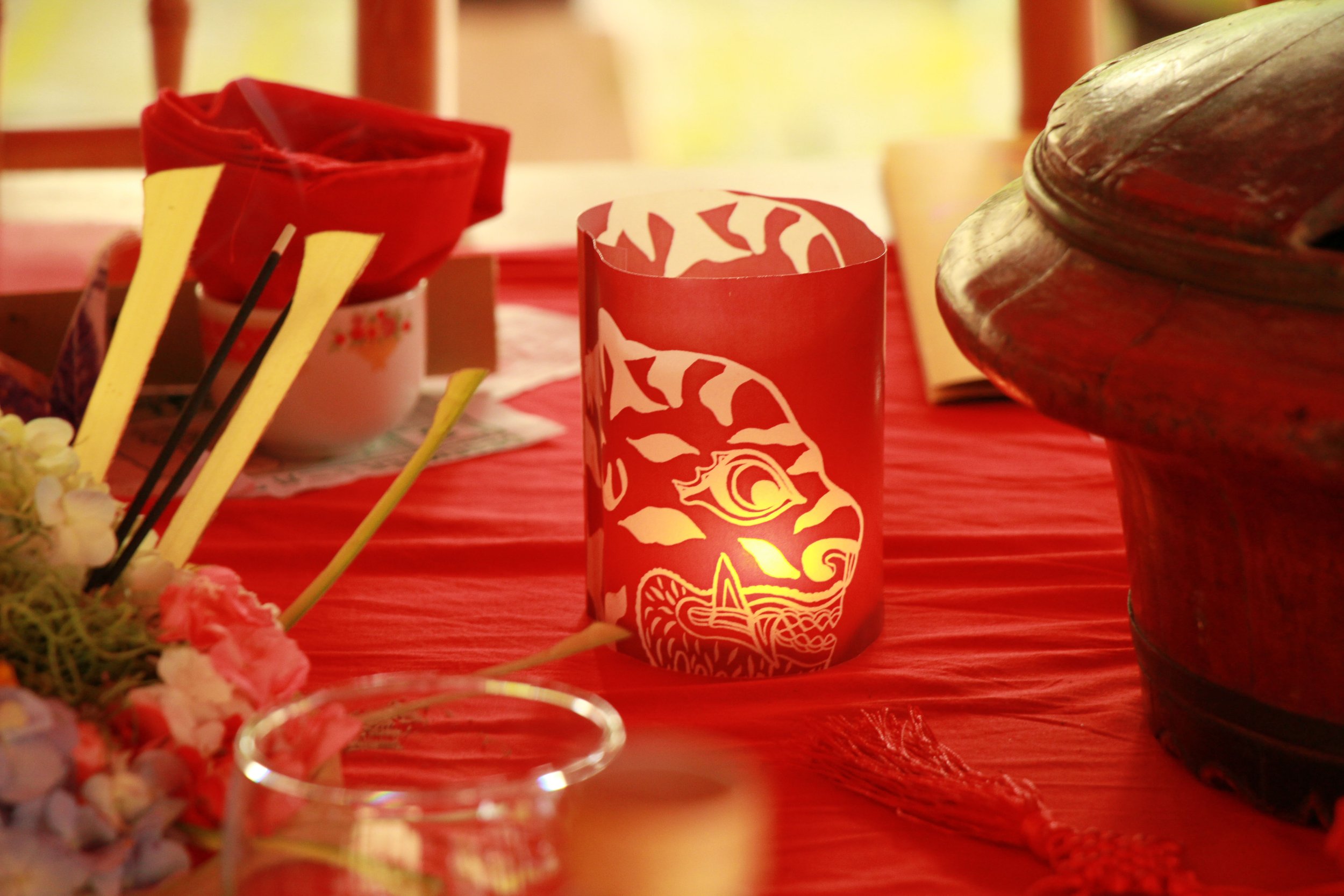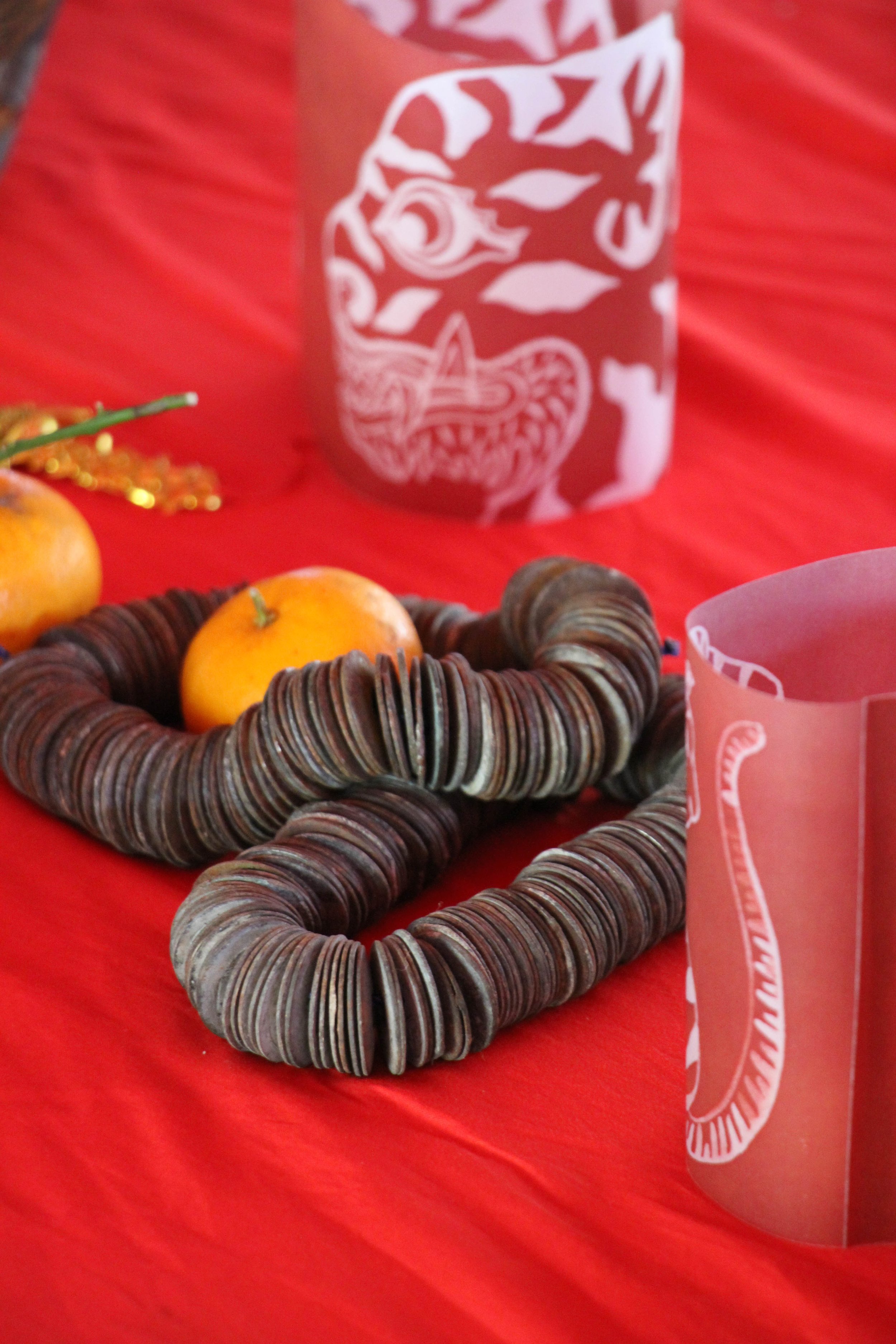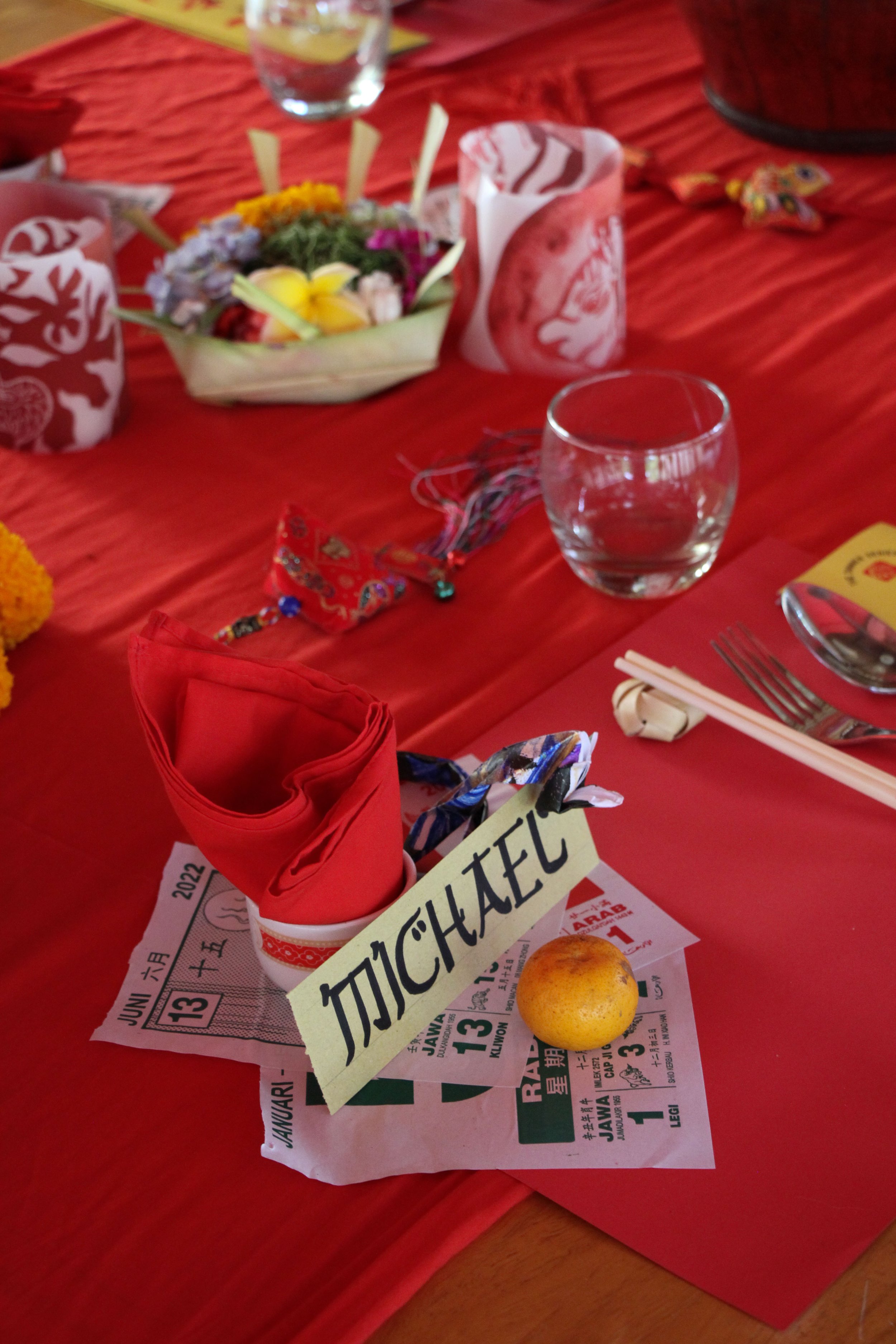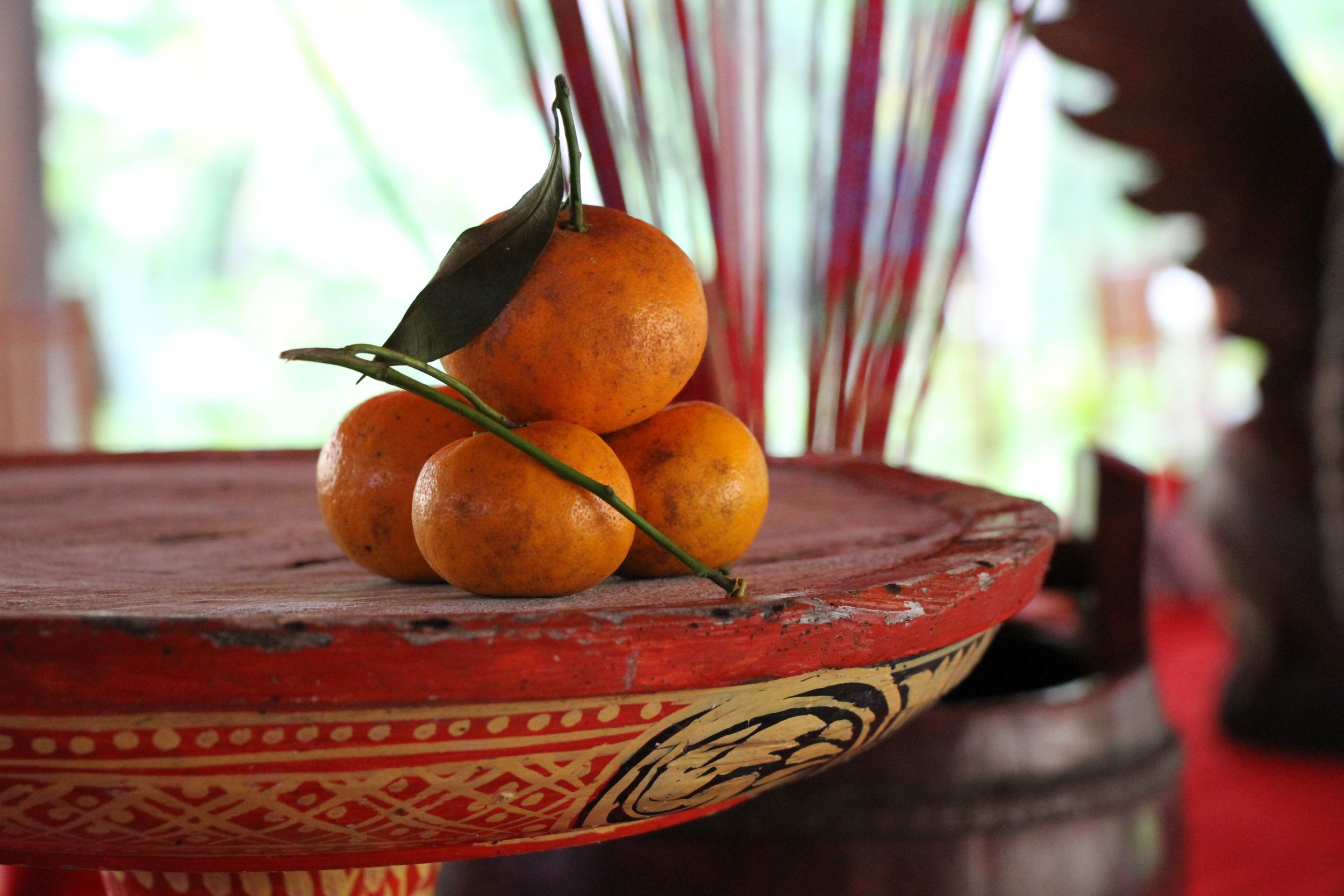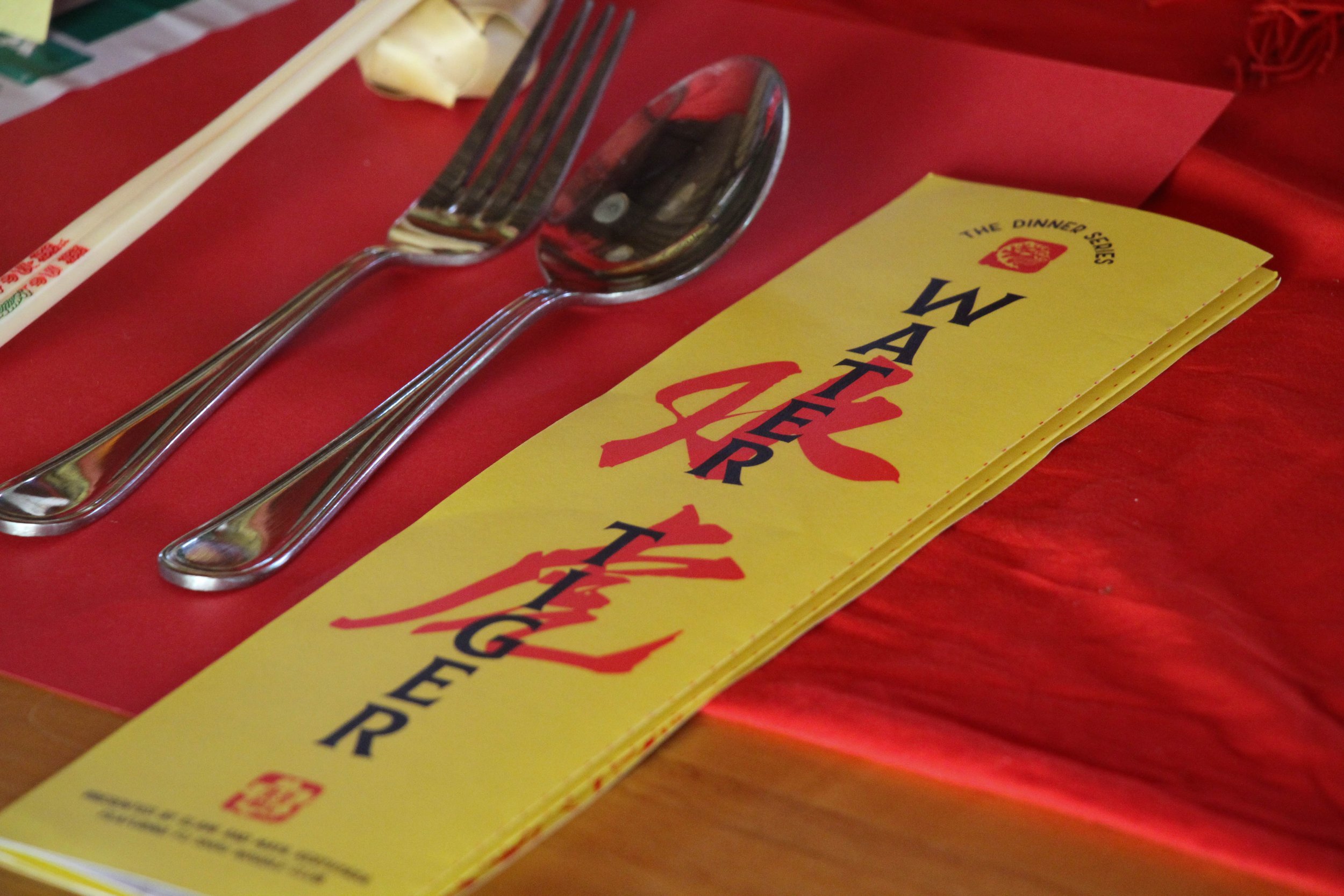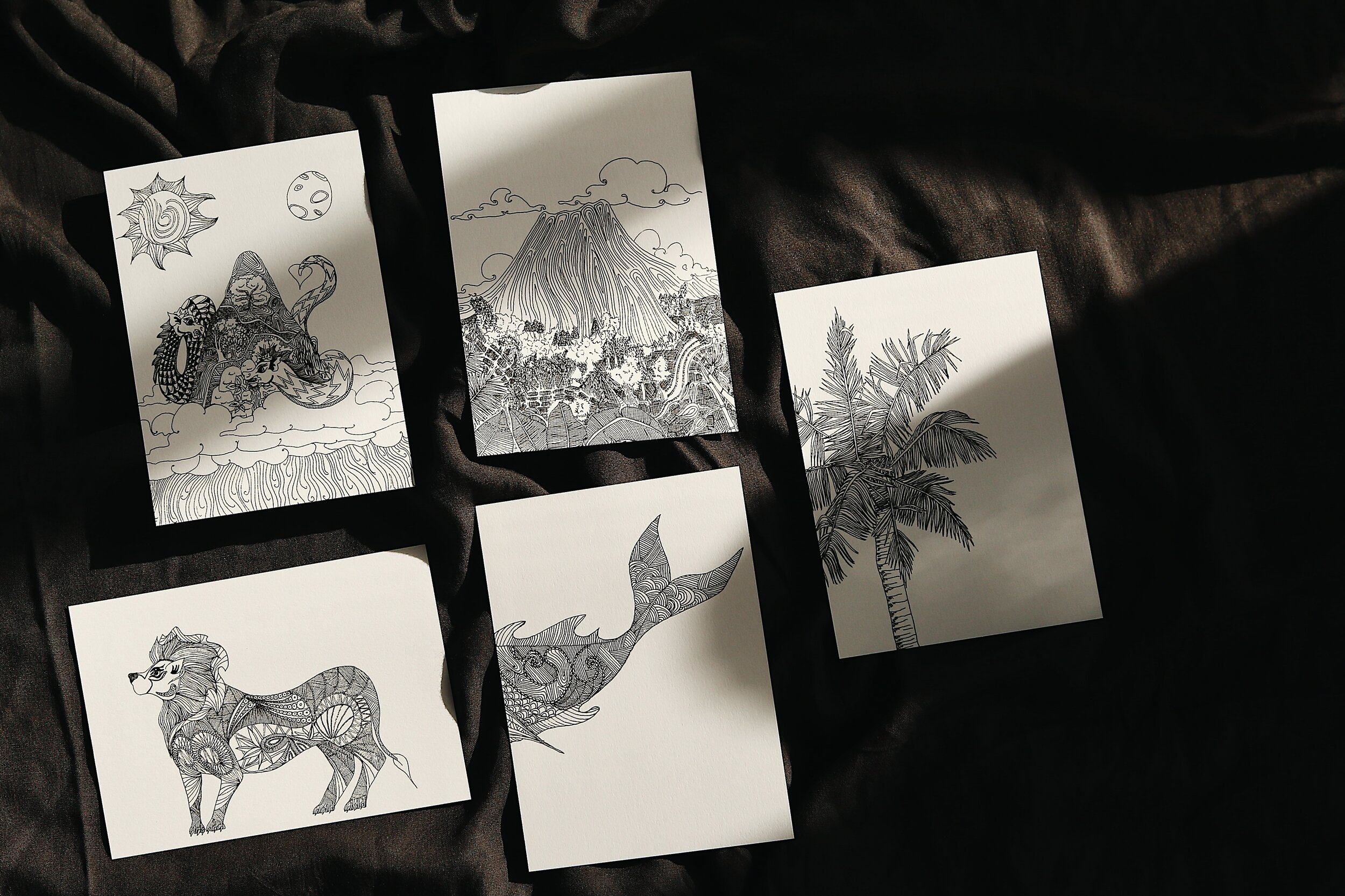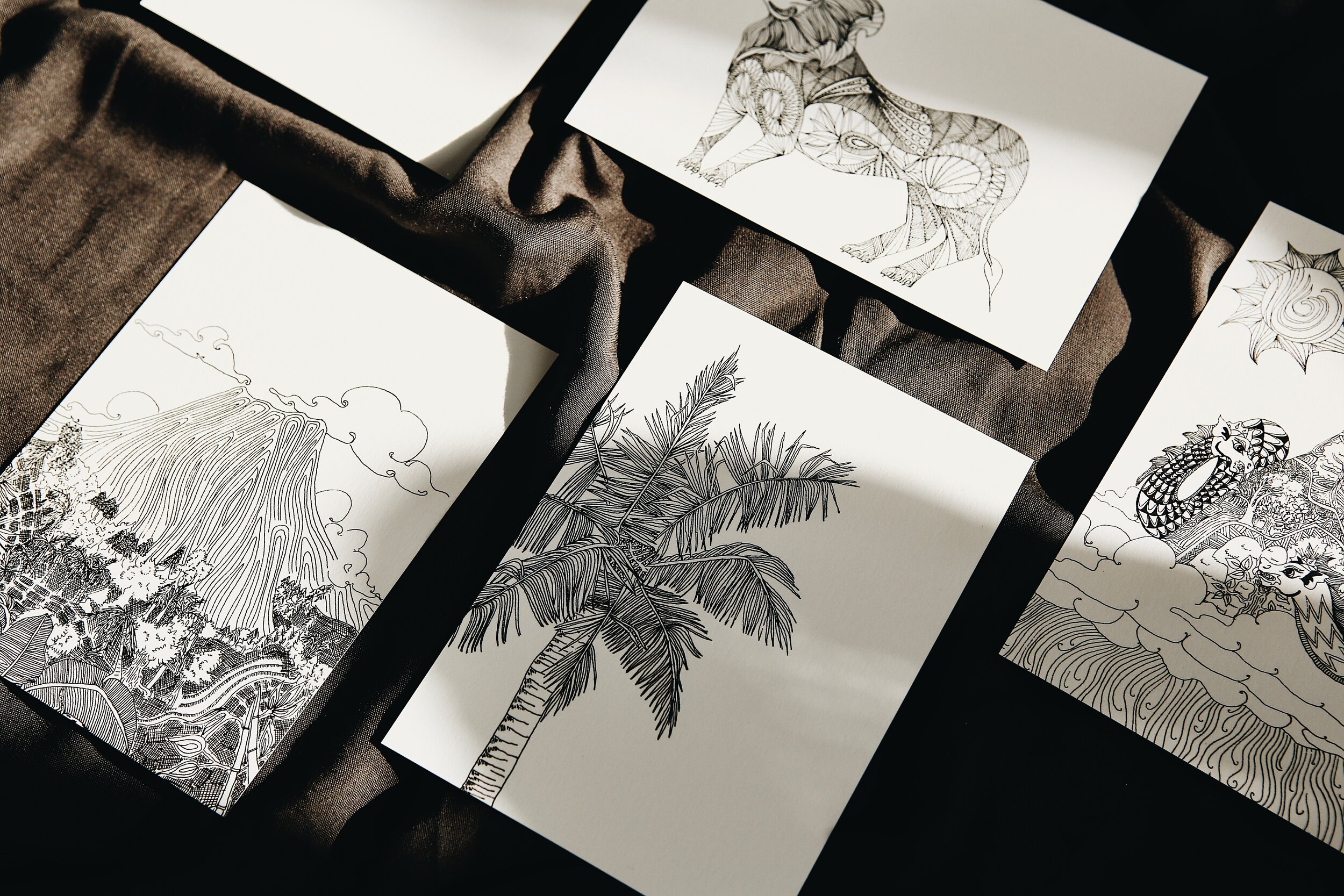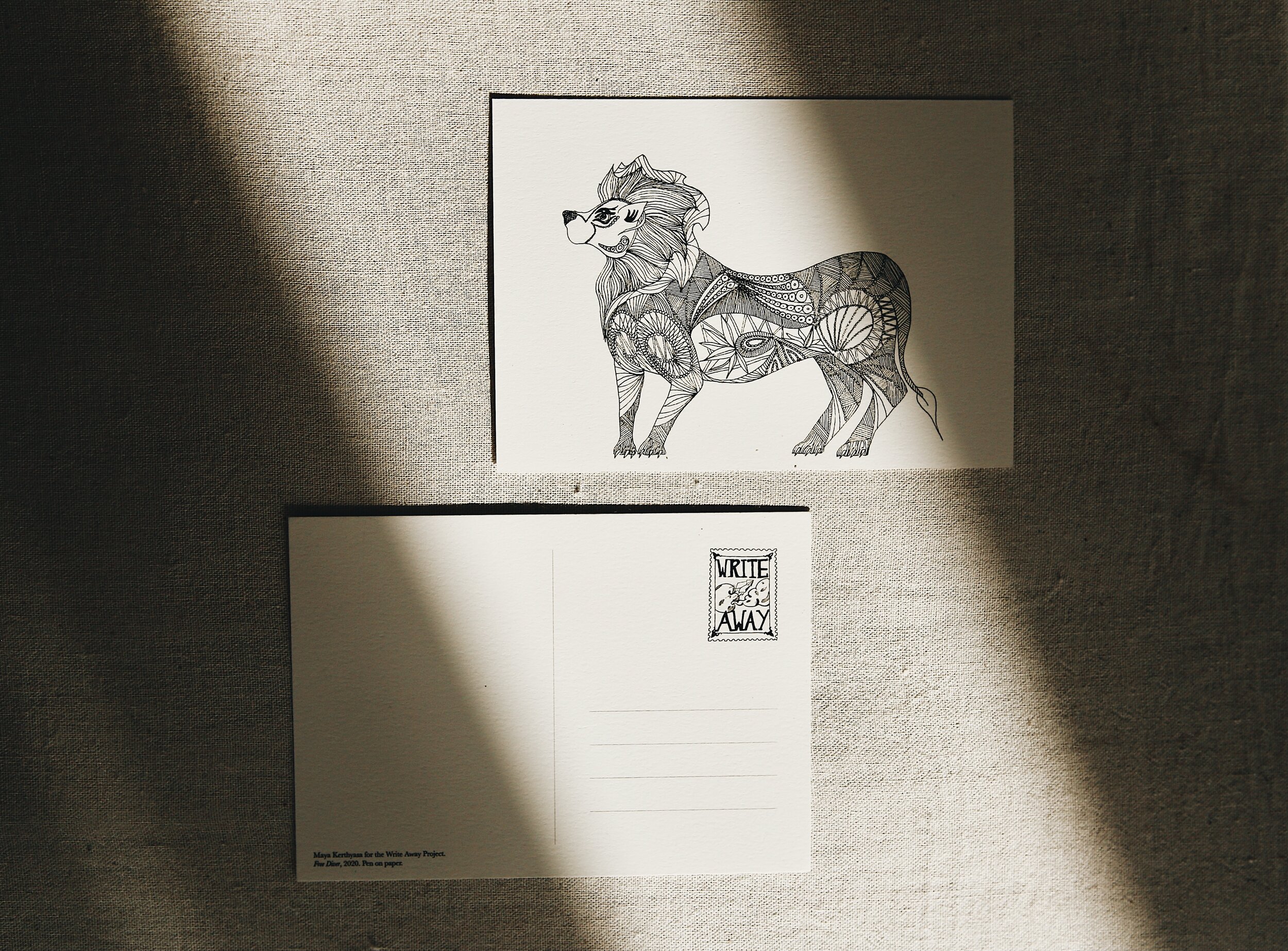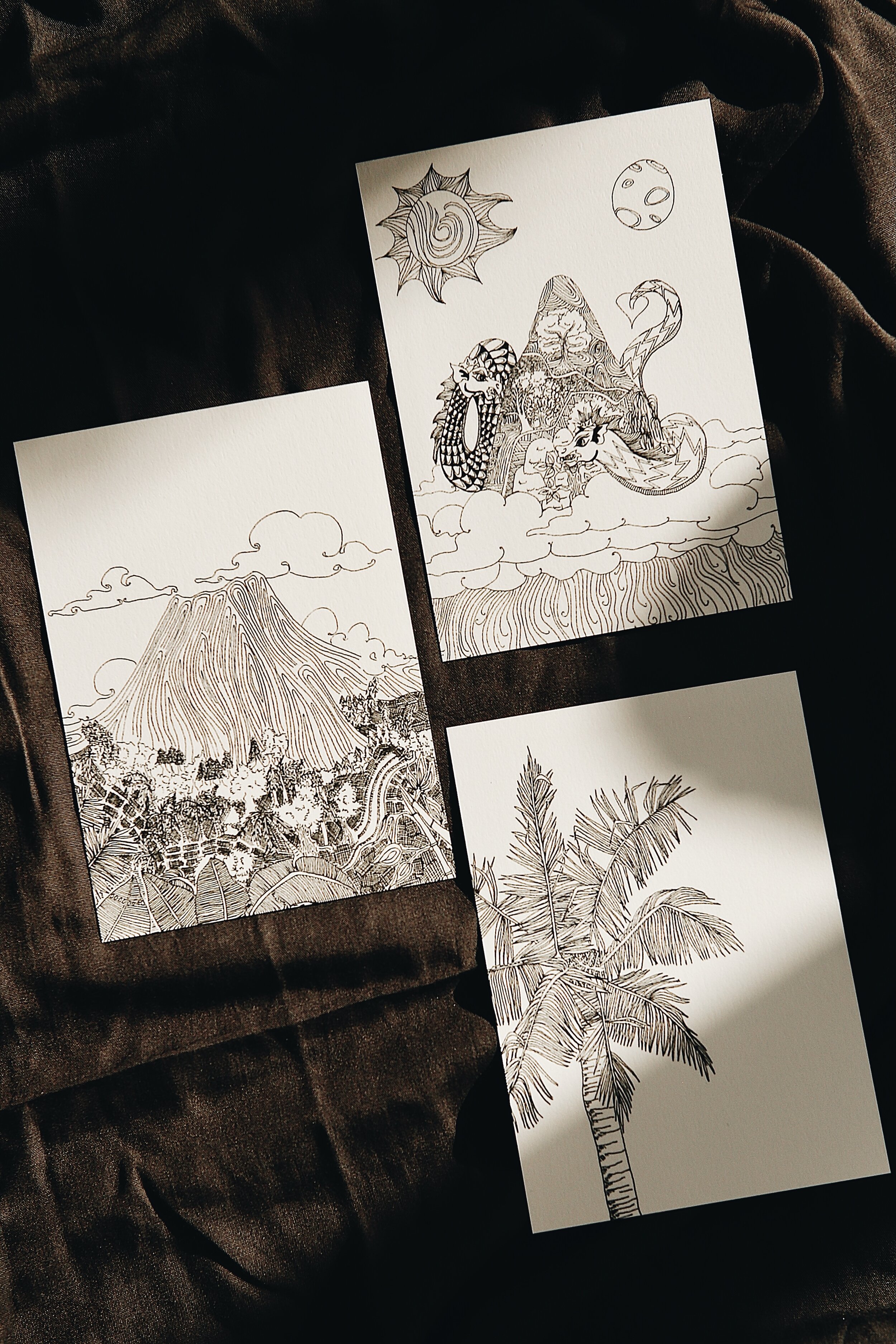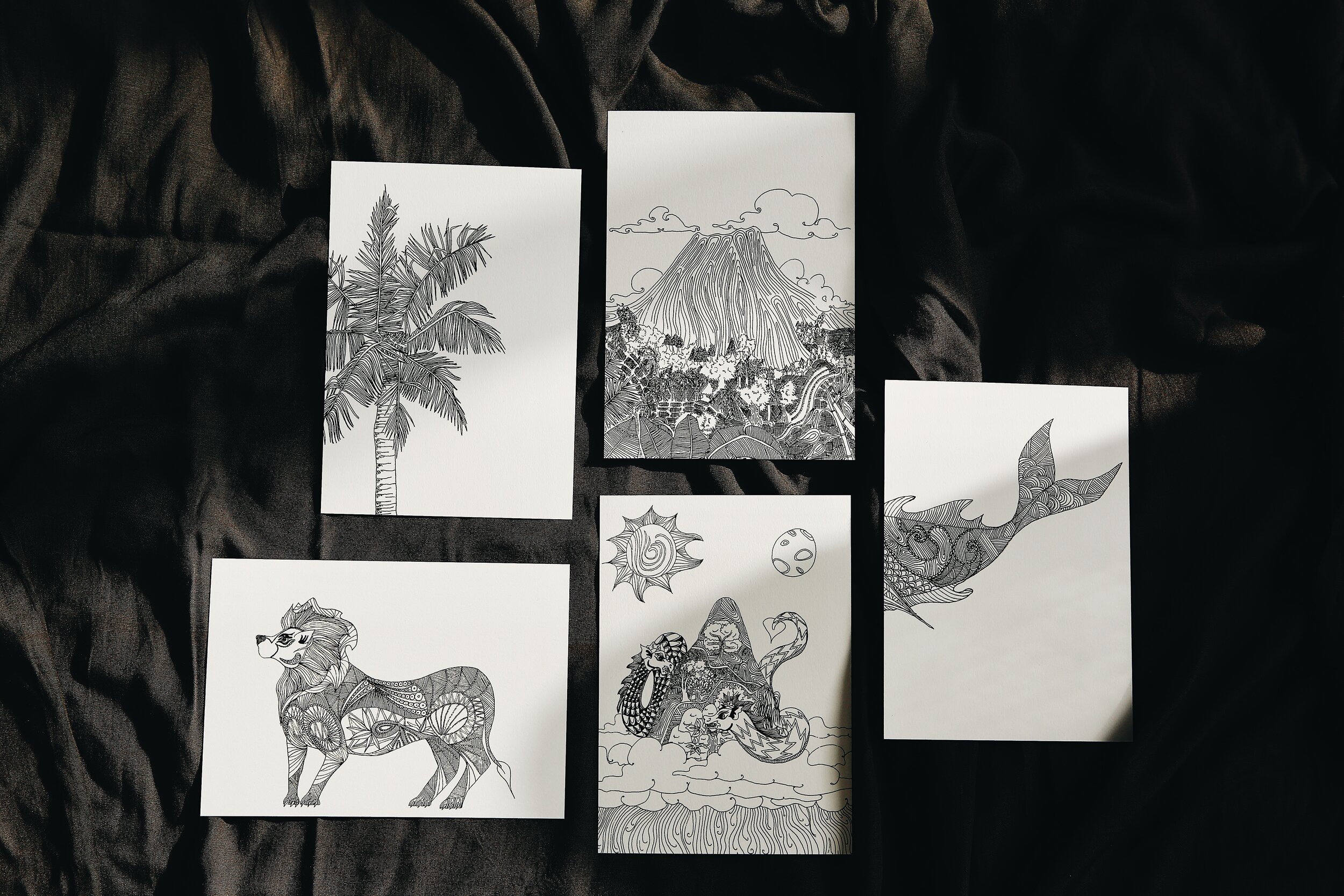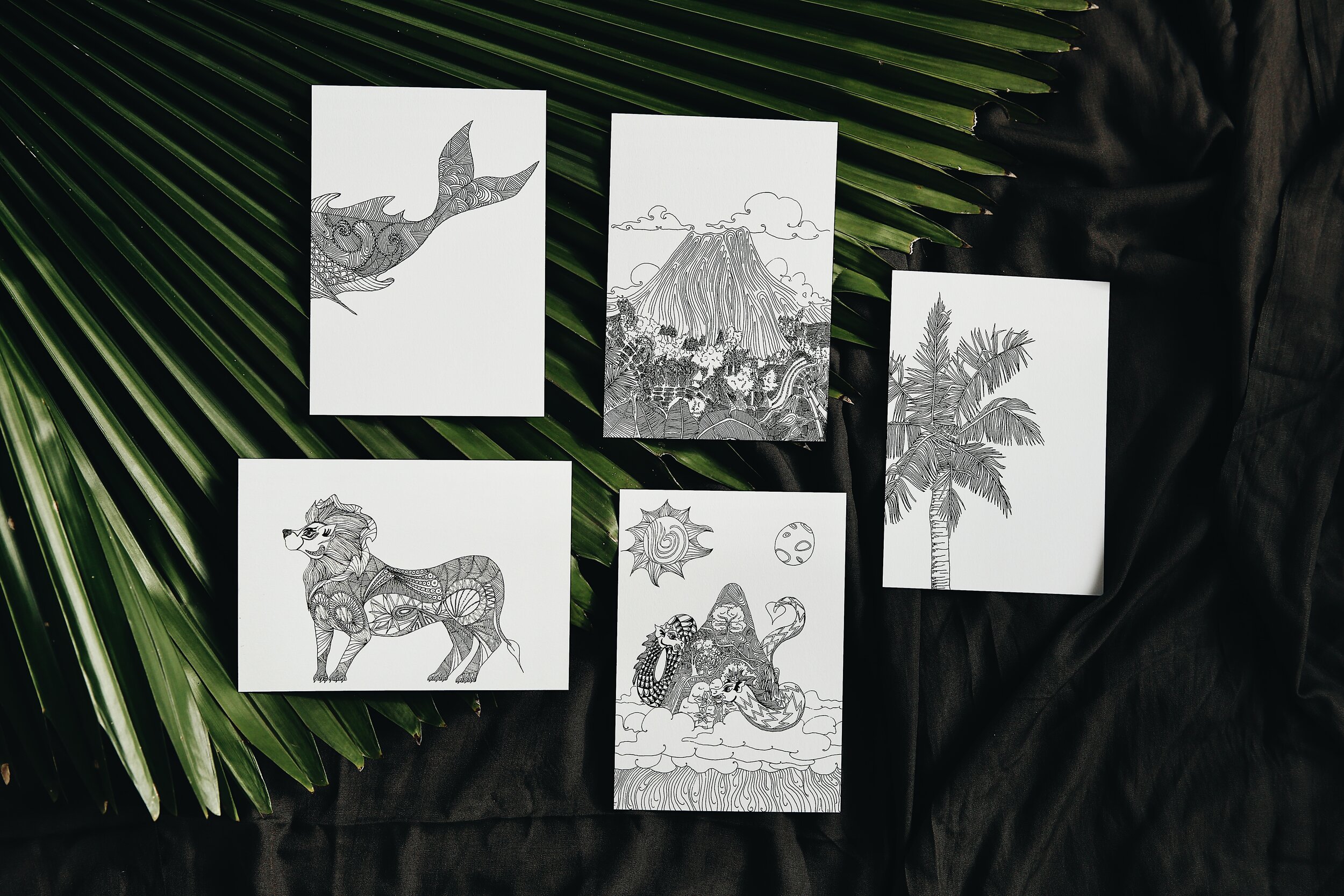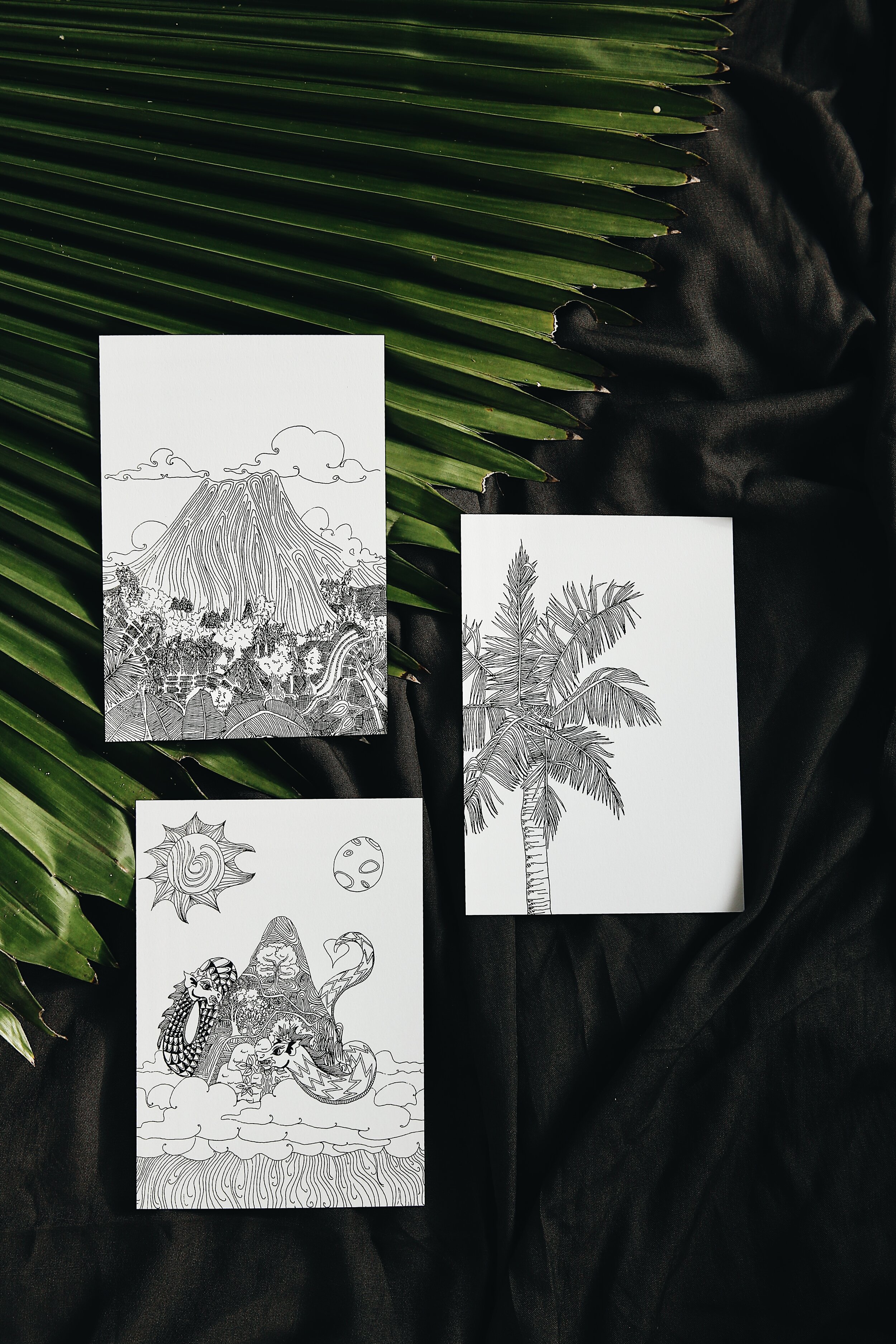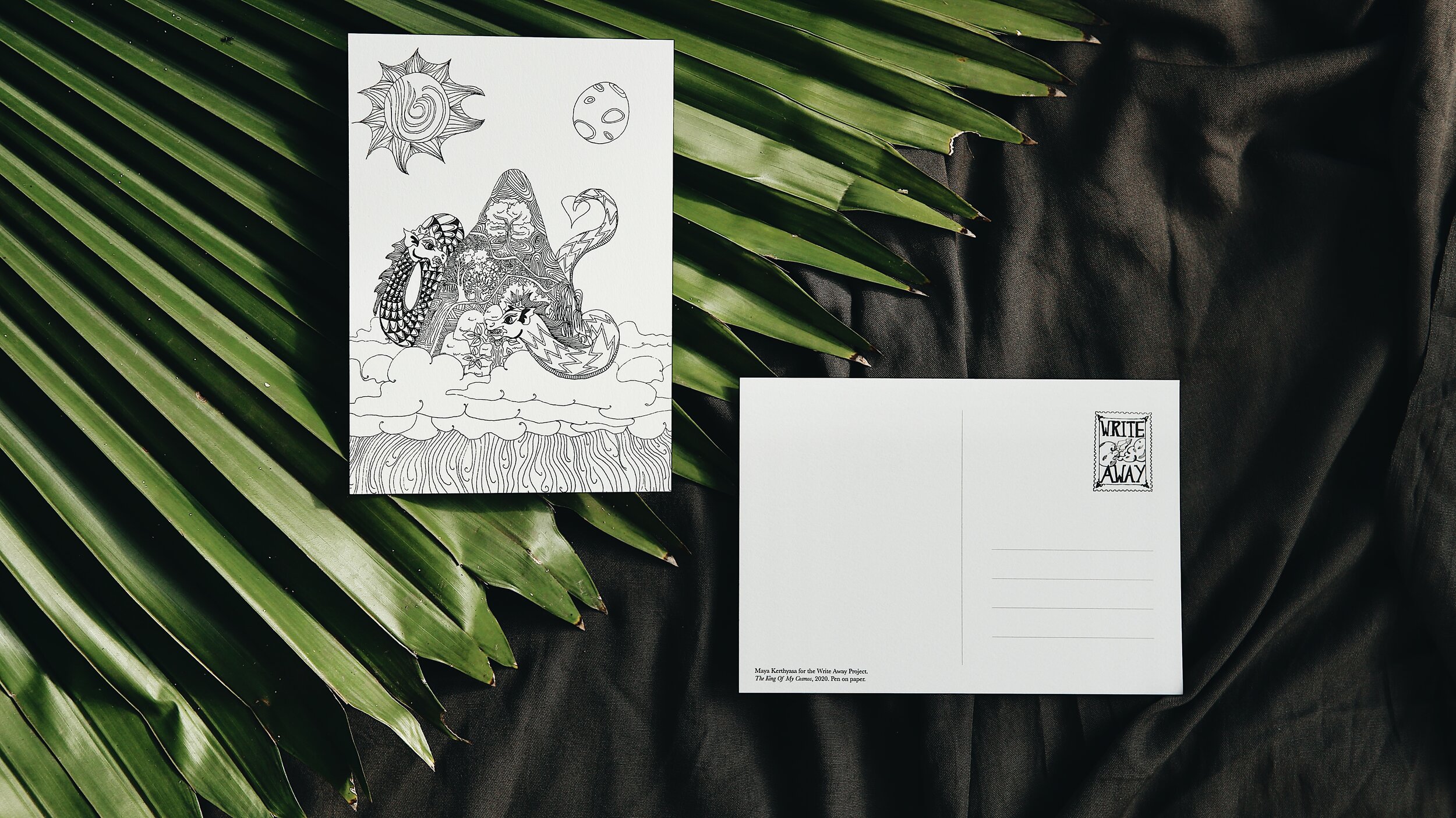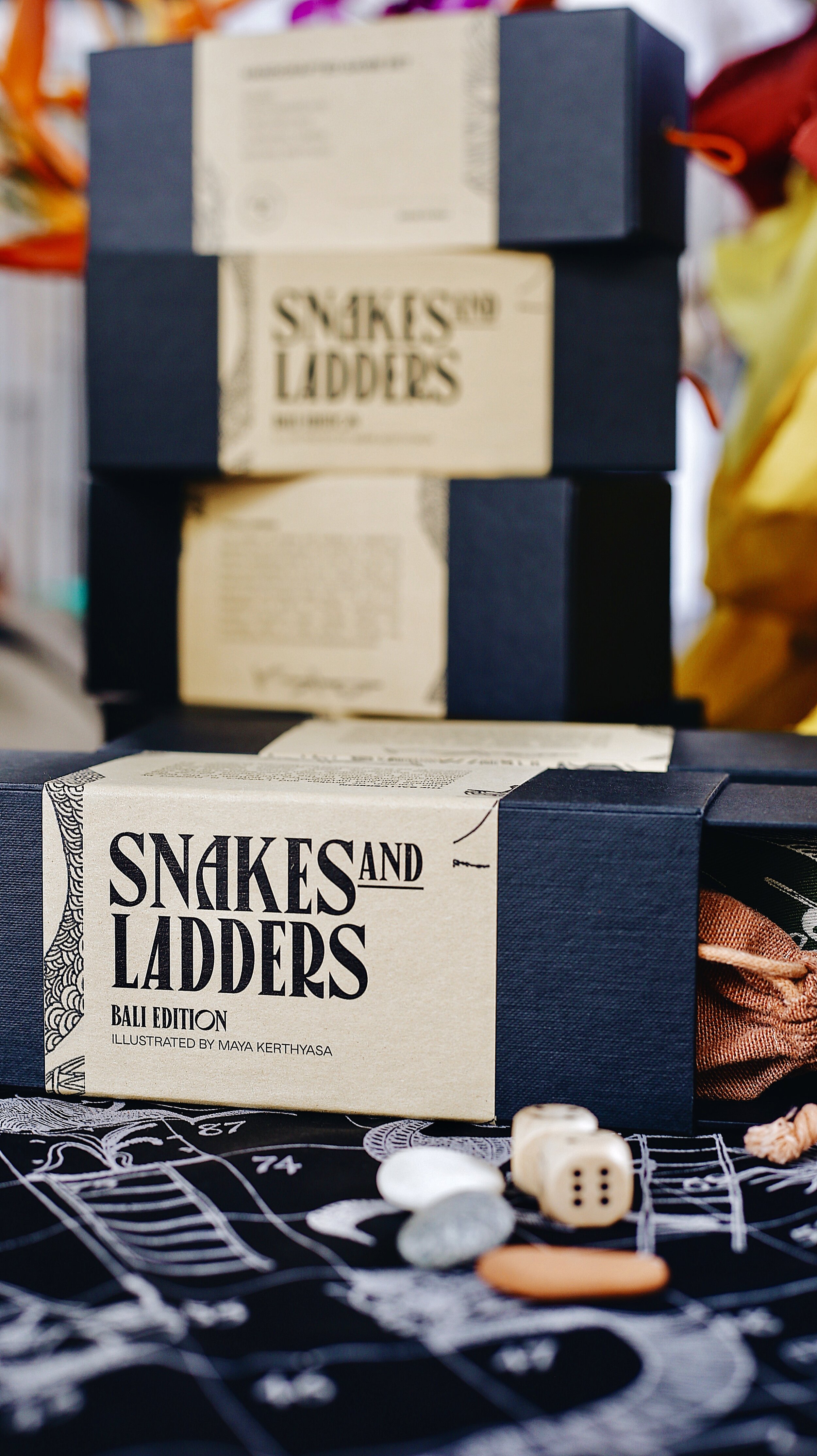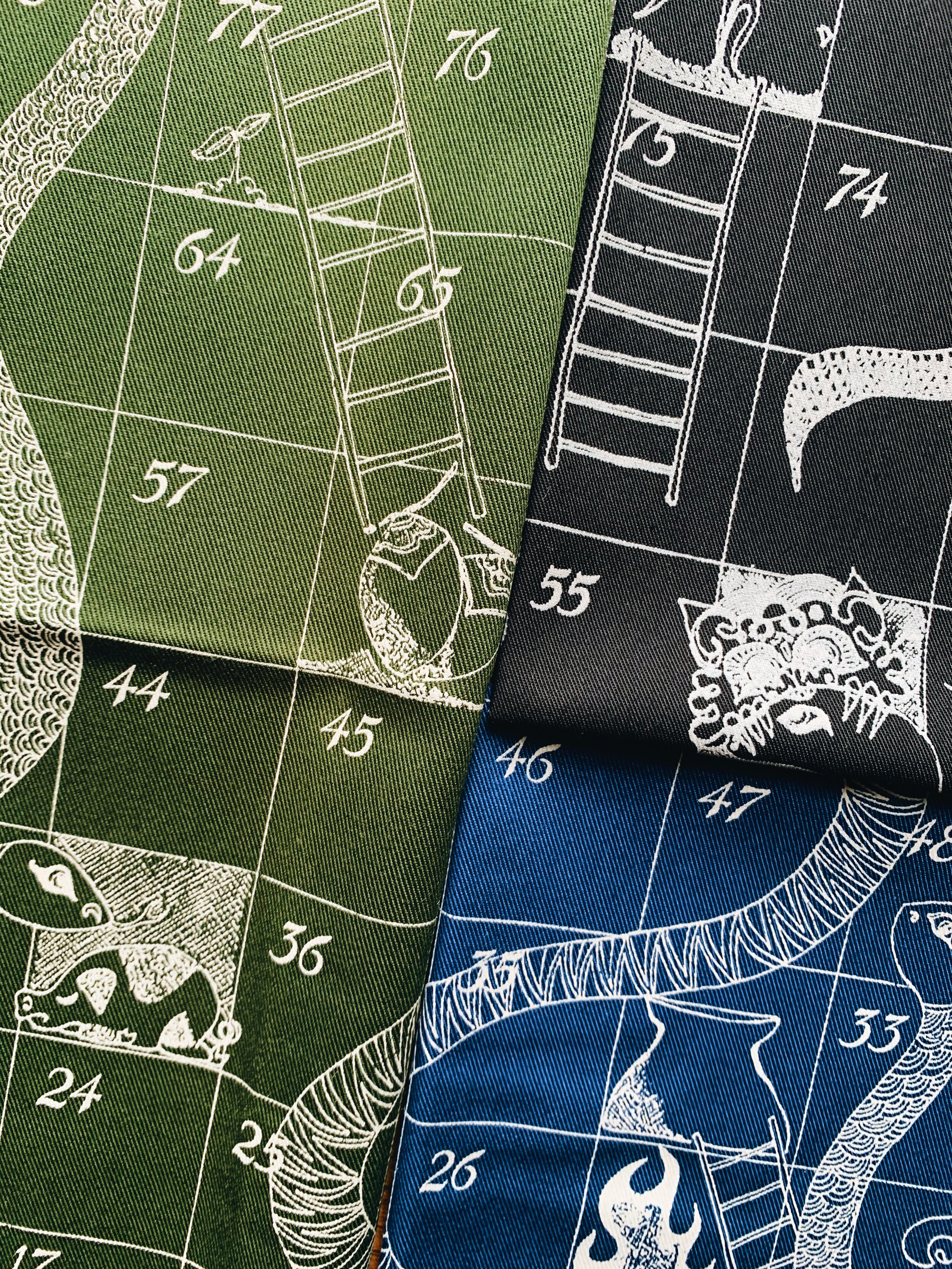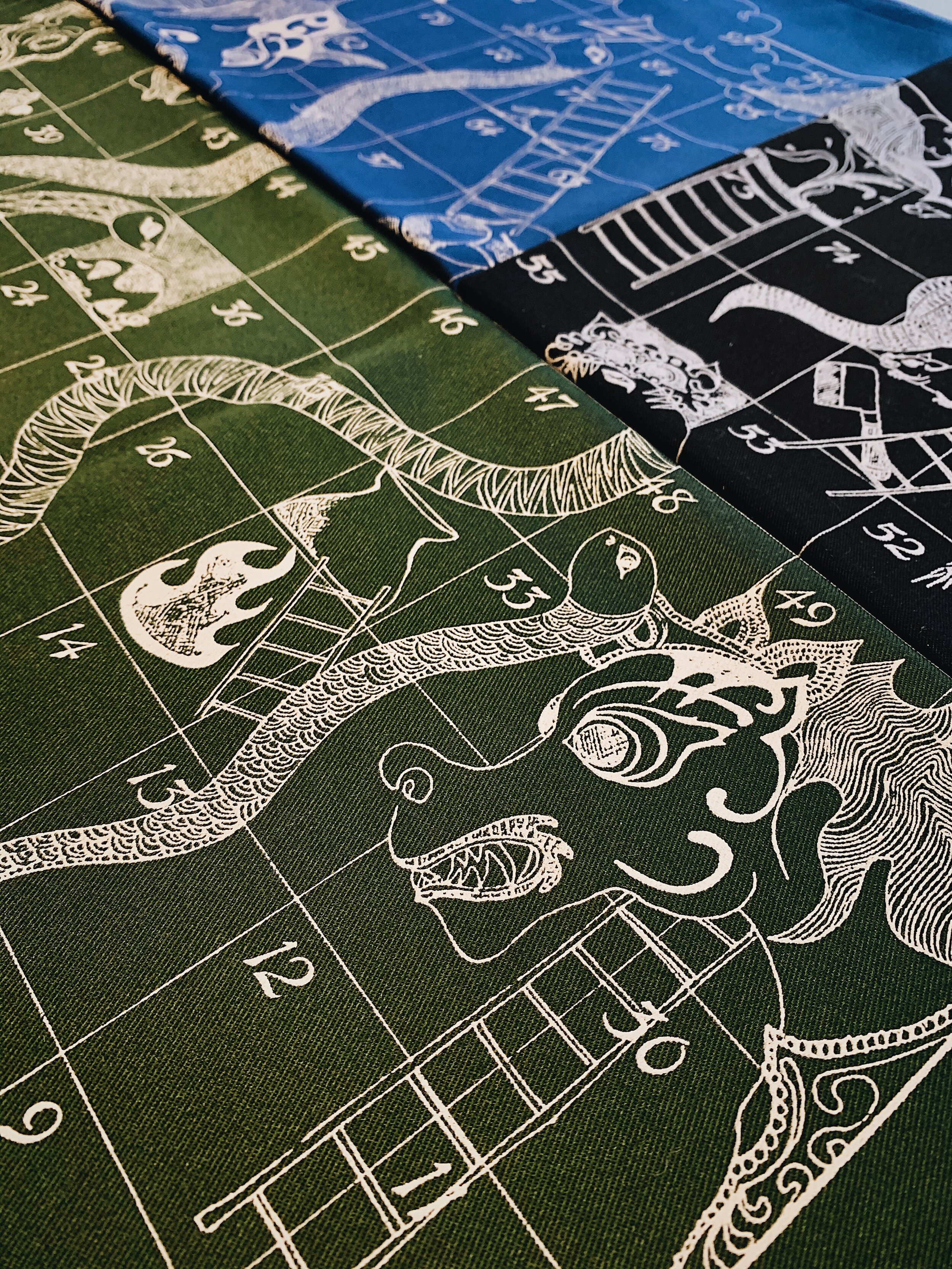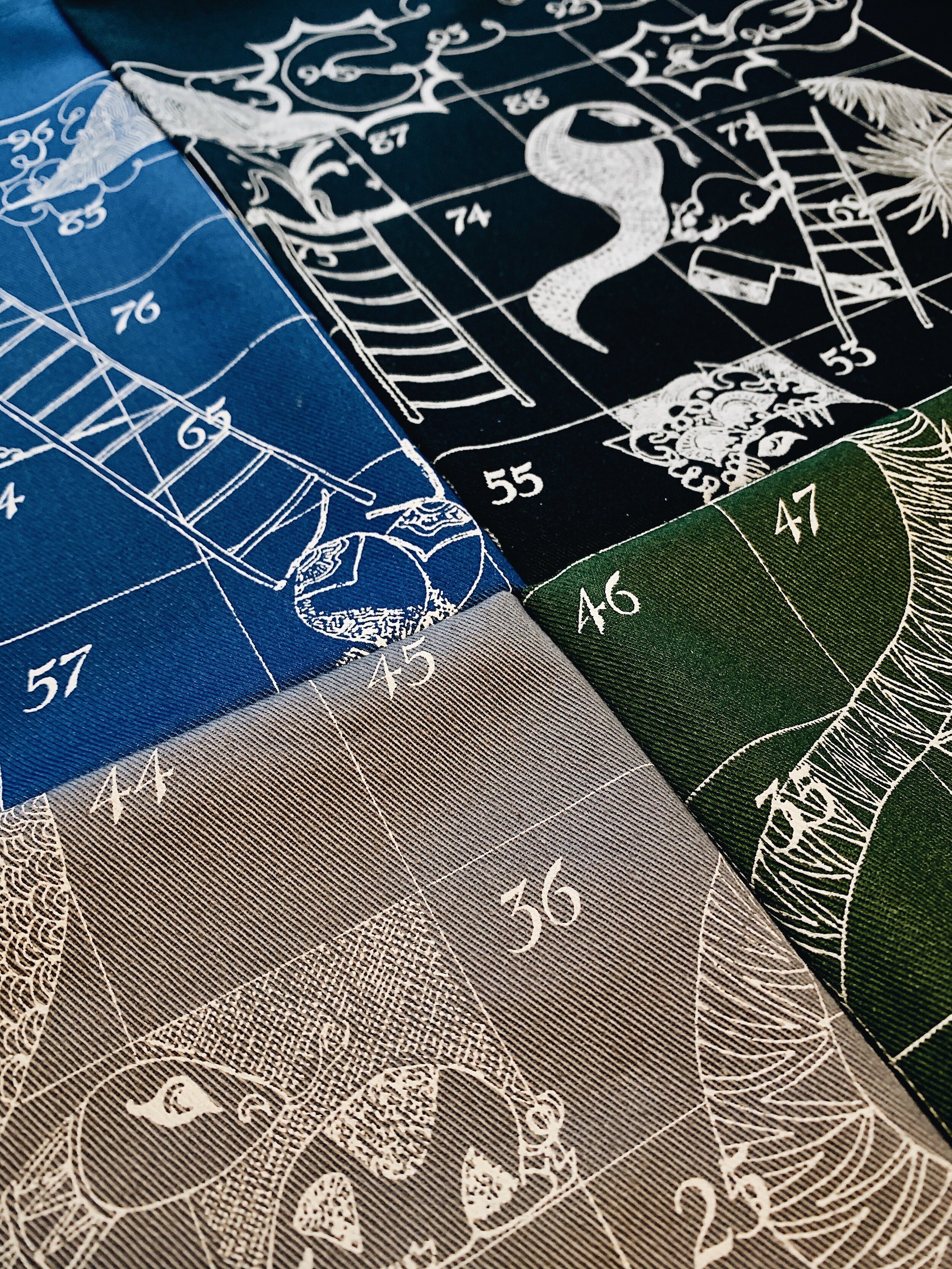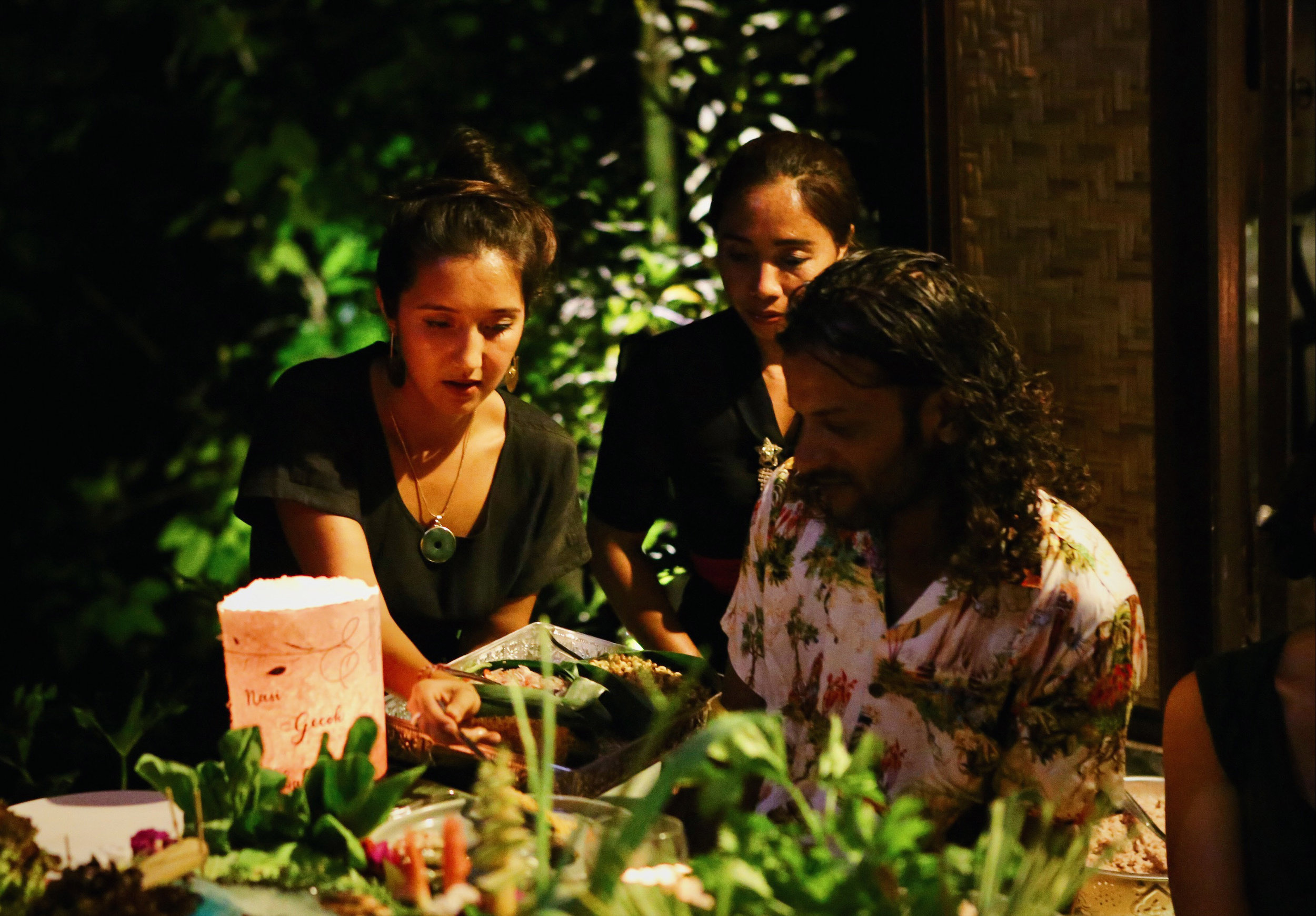Ring of Fire Dinner and Screening at Kaum, Potato Head Bali
/We set sail for the Spice Islands in Kaum at Potato Head Bali for a special screening of Ring of Fire. An incredible experience. Curated with Maya Kerthyasa, we turned the room into an immersive theatre.
The dishes on the menu were inspired by various scenes from Spice Islands Saga – the first volume of the five-part series Ring of Fire that documents the ten-year voyage of two filmmakers, brothers Lorne and Lawrence Blair, through the islands of Indonesia.
Some of our favorite details:
Welcome aboard the Sinar Surya. We recreated the ship’s lettering on the door to Kaum.
2. Feeding the senses: on the table for the Ring of Fire: Spice Island Saga we had fresh cloves, clove flowers, fresh nutmeg fruits, black tea, salt and seaweed to help scent the air with island and boat smells.
3. We took inspiration from specific frames from the Spice Island Saga episode to help us design the event. From the boat colors and materials, to plates and raw ingredients, we scoured each second for cues, like these hand-carved googles we recreated.
4. Jars of live crickets: a nod to the scenes where the film makers share their quarters with variety of creepy crawlies.
5. Pages from the book that started it all: Alfred Russel Wallace’s The Malay Archipelago. We added the pages to the table and around the restaurant.
A description of nutmeg from John Cameron in the mid-1800s: "The nutmeg is a very beautiful tree; when of full size it is about twenty-five or thirty feet high, and, if well-formed, should have a diameter from the extremes of its lower branches of little less...The fruit grows slowly (and until) within a few days of ripening, might be readily mistaken for the peach; it is of the same size, and has the same downy texture of the skin--all it wants to complete the resemblance is the pink cheek. When the nut inside is ripe, the fruit splits down the center, and remains half-open, discovering the bright crimson mace that enshrouds the nut. In a few days, if not gathered in, the fruit opens wider, and the nut, with the mace around it, drops to the ground, leaving the fruity husk still hanging to the tree, till it withers away and falls off. When the nuts are collected, the mace is first carefully removed and placed in the sun to dry. Under the mace is a thin hard shell containing the nutmeg, and this is not broken till the nutmegs are prepared for shipment. A good tree yields 600 nuts per annum, or about 8 pounds weight. There is no particular season for the nutmeg crop, and the blossoms and the ripe fruit may often be seen hanging together on the same branch. Altogether there are few prettier trees- prettier in form,in foliage, in blossom, and in bearing, than the nutmeg."
From The Banda Islands: Hidden Histories and Miracles of Nature
“The Blair Brothers sailed with pirates aboard their black-sailed schooners in search of the Bird of Paradise, struggled through rapids and deep jungles searching for elusive nomadic tribes, witnessed veiled forms of human sacrifice and found themselves drawn into ten years of danger and discovery in a magical land where ancient myths still flourish.”

